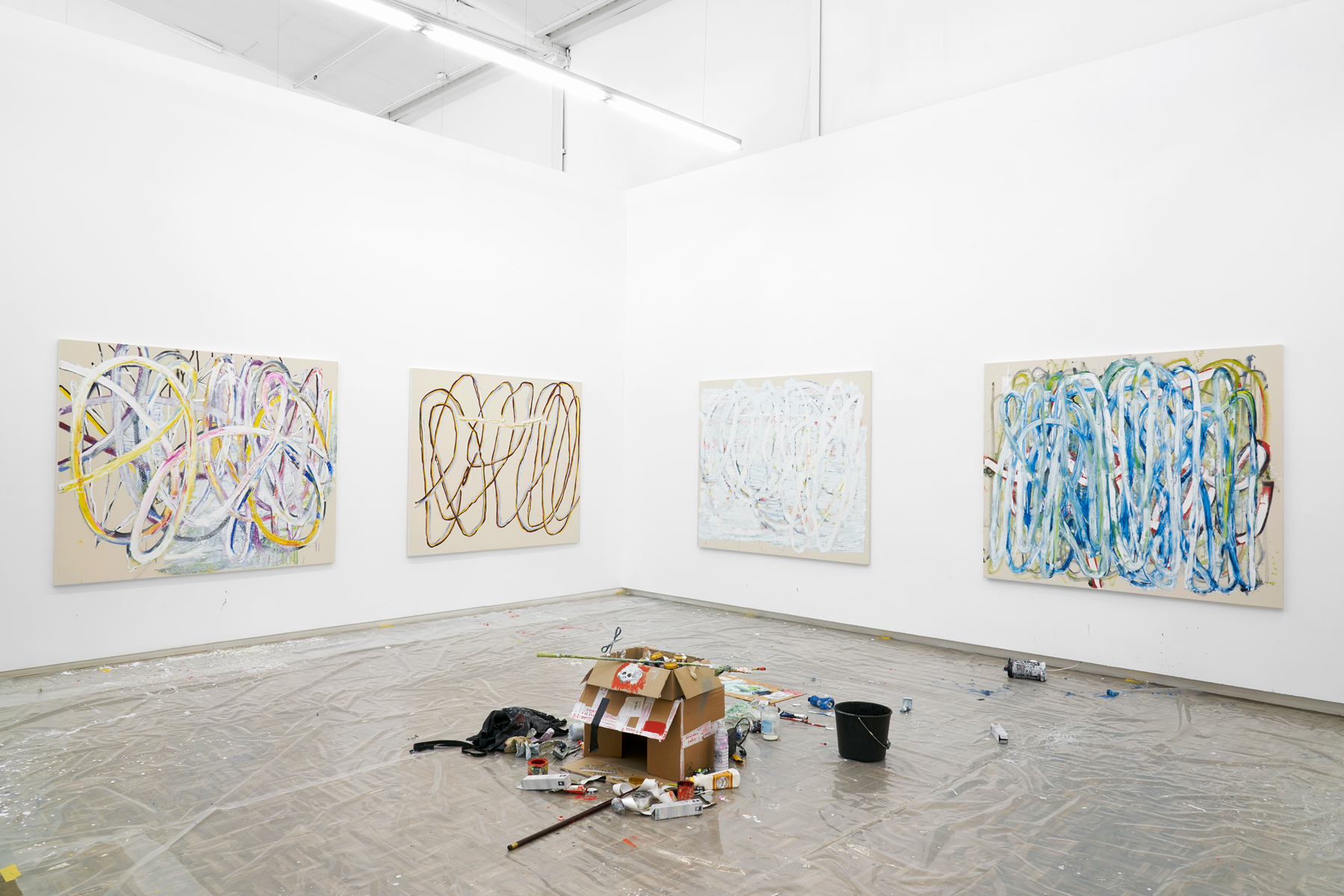
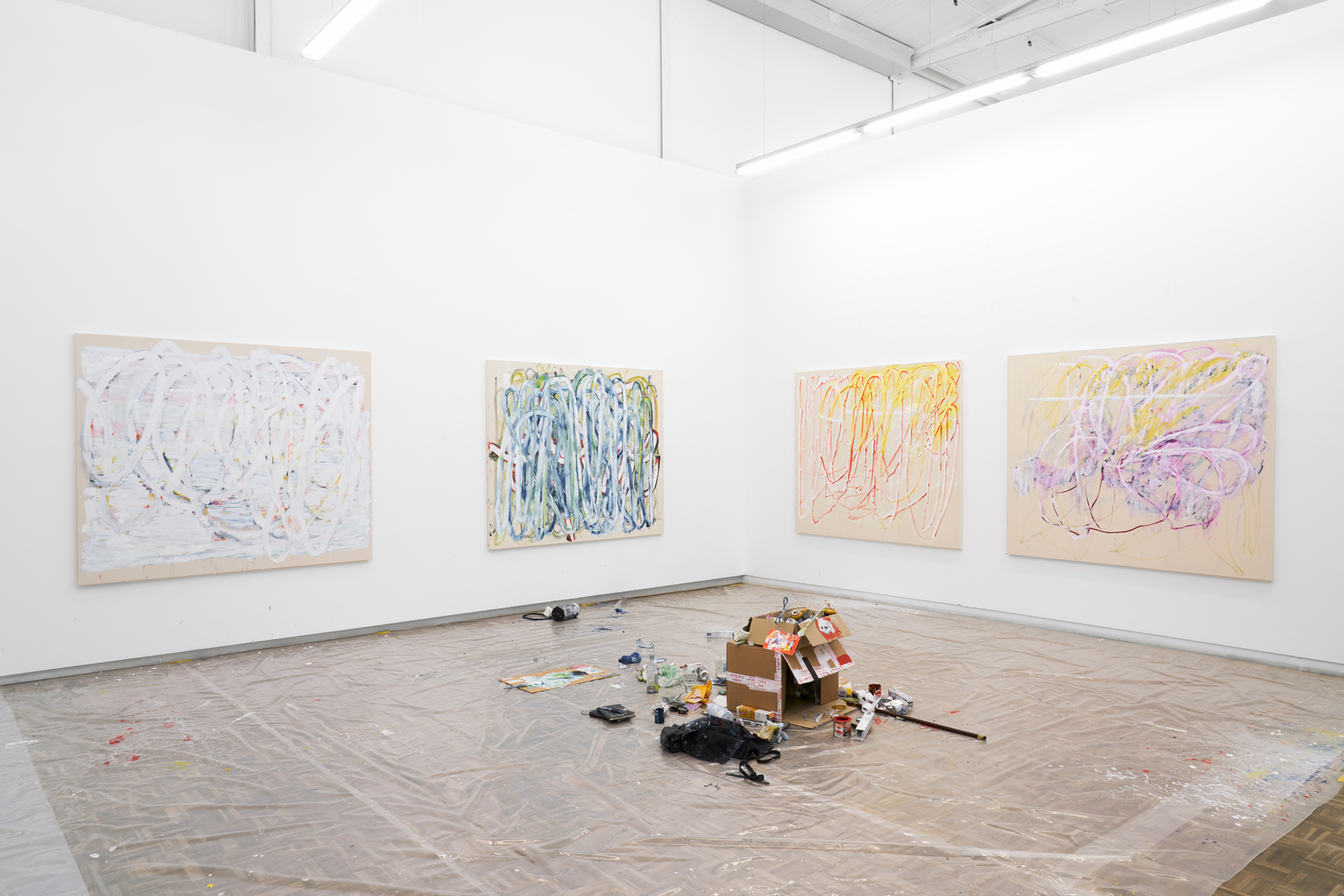

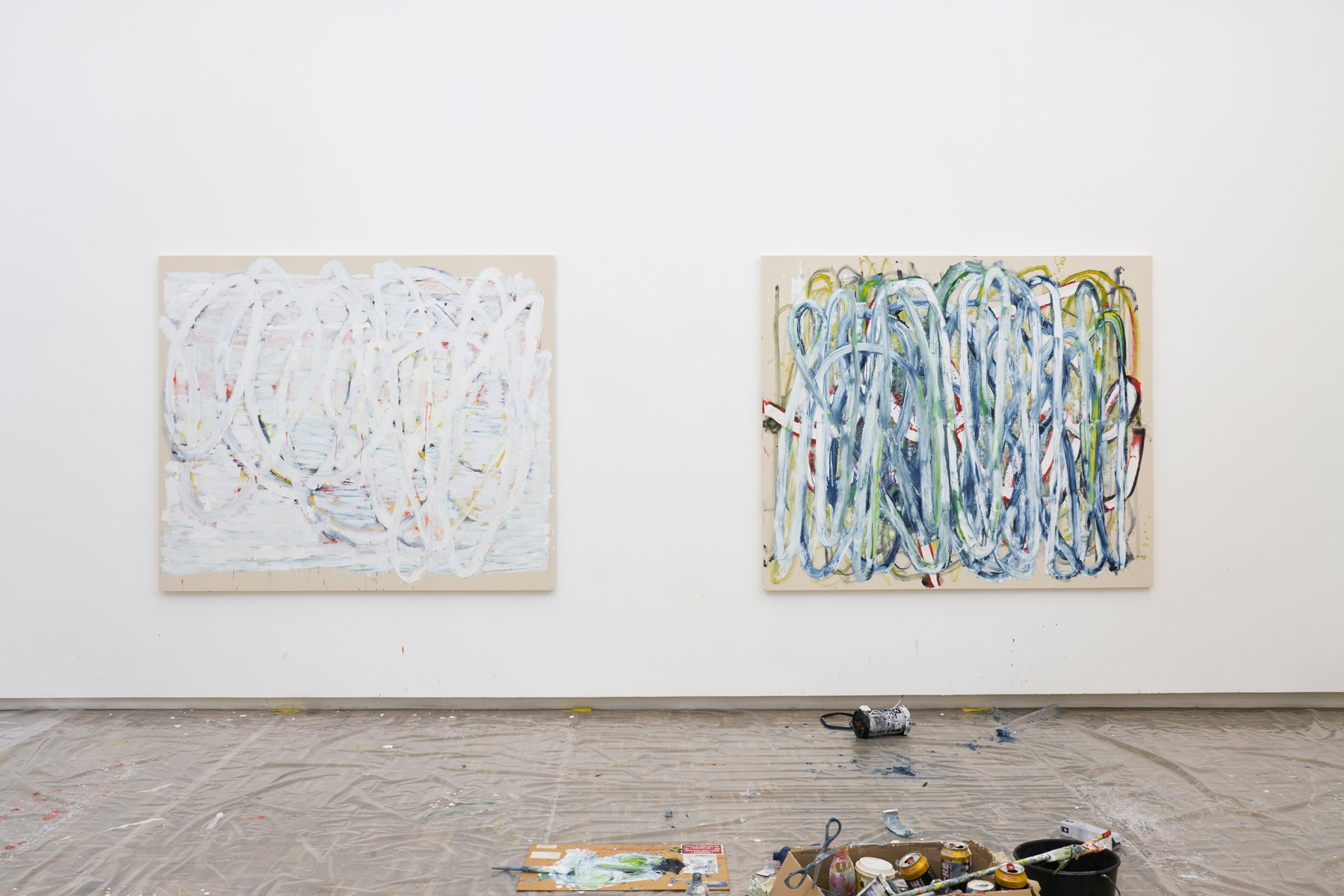
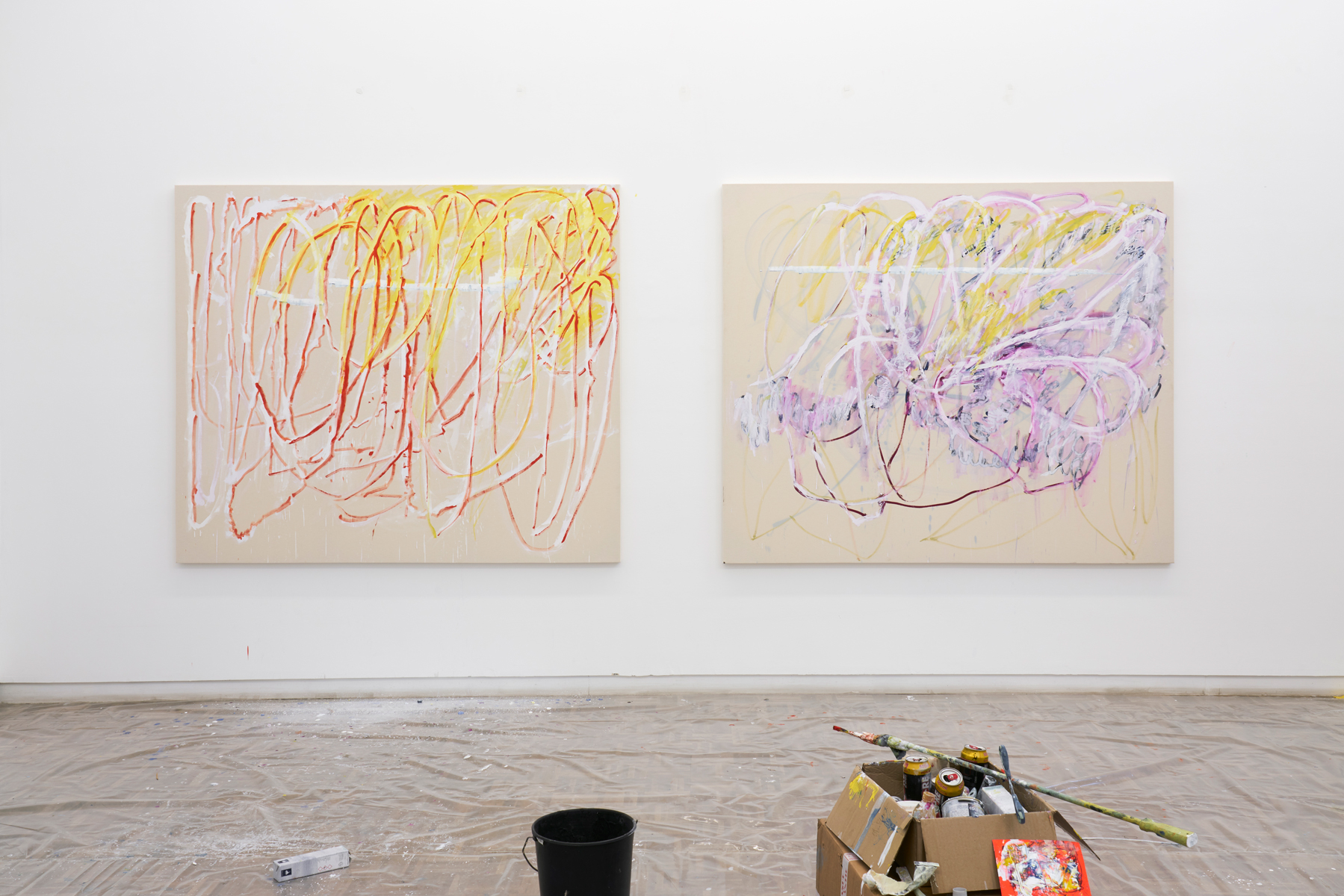
Text by Keely Shinners
We might think of the exhibition as a game. A game is a structured form of play. An exhibition is a structured form of art-making. The structure: four white walls, six raw canvas. The aim: make of them what you will. When I visit Jan-Henri Booyens in the gallery-cum-studio, the tools with which he is to accomplish this are all laid out on the floor: cans of vermilion, cans of spray paint, cans of Score. A deconstructed umbrella (for shadow-making on the wall), a deconstructed kite (for a trip-wire), a clump of tin-foil with a smiley-face drawn on (the new studio assistant, apparently). For Booyens, it seems, art-making is itself a form of play.
A game is a speletjie, is a spell, is a form of magic. Booyens shows me his “magic wand” — a paintbrush taped to the end of a stick — which he uses to reach high up on the canvas and draw intuitive, sometimes uncontrolled, lines. He refers to the hidden elements in his paintings — like figurative moments, like glow-in-the-dark paint — as “easter eggs.” The paintings “take the viewer on a thought journey,” a visual maze, a loop-the-loop for the eye, engendering a myriad dizzying sensations and ideas. For the artist, the gesture is more energetic: the arm sweeps up, down, and around, as if gearing up to pitch a softball, or twirling a ribbon round on stage, or winding up a giant music box.
A game can also be a challenge. For Booyens, the challenge is uniformity. Each painting is composed of the same repeated gesture. It resembles the margin-doodles of the listless. Or the frenetic scrawls of a writer stuck between something and nothing to say. As a writer, I’m reminded of my own notes, in cursive: each painting a word; the exhibition a sentence I can’t quite read. “Not a sentence,” says Booyens, “a response.” As a game is a response, a many million responses, to a particular problem or code.
We might think of the canvas as the problem. Booyens’s response is guided not by plan and execution but impulse and improvisation. That was the whole schtick with the New York school: to do rather than make. To be surprised, overcome, and even endangered by the process. To let things play out.
Booyens says he’s less influenced by high art than he is by nature and its ever-surprising gestures and moods. He’s also deeply influenced by his glitch art practice. A glitch occurs when there’s a breakdown or over-accumulation of data, which results in an error; glitch art is the aestheticization of that error. Booyens’s paintings embrace error. Errant marks corrupt the uniformity imposed on the foreground. Paint imitates the unpredictability which gives matter its texture. Raw canvas plays the role of antimatter, suggesting the non-thing which is infinite.
We might even think of painting as a prehistoric glitch, an over-accumulation of marks which defile a fabric. An imperfection called image. “The artist, in the process of painting,” says Booyens, “destroys something serene and pure.” A painting makes a mess and calls it image. An image makes a mess of the images that came before. So the game takes on a tone of aggression, as games can sometimes do, where the act of playing breaks rules, leaves scars. Interestingly enough, the word play has the same etymological origin as the word plight.
I’m reminded of Hito Steryl’s idea of the image as inherently damaged:
The glitch, the bruise of the image or sound,” she writes, “testifies to its being worked with and working; being passed on and circulated, being matter in action. History inscribes itself into the image in forms of bruises and scars… So it’s not about object-ontologies but image-actions, image-gestures, thing-affinities, chains of reaction of objects, forces, and pixels, that manifest in scars and bruises, but also sometimes in the liquid harmony of the floating world of images.1
It’s a common conception that clarity begets, or springs form, order. For Booyens, it does not. Clarity articulates in chaos, an accumulation of gestures which make, and are, scars.
1 “Artifacts: A Conversation Between Hito Steyerl and Daniel Rourke.” Rhizome, 23 March 2003. https://rhizome.org/editorial/2013/mar/28/artifacts/

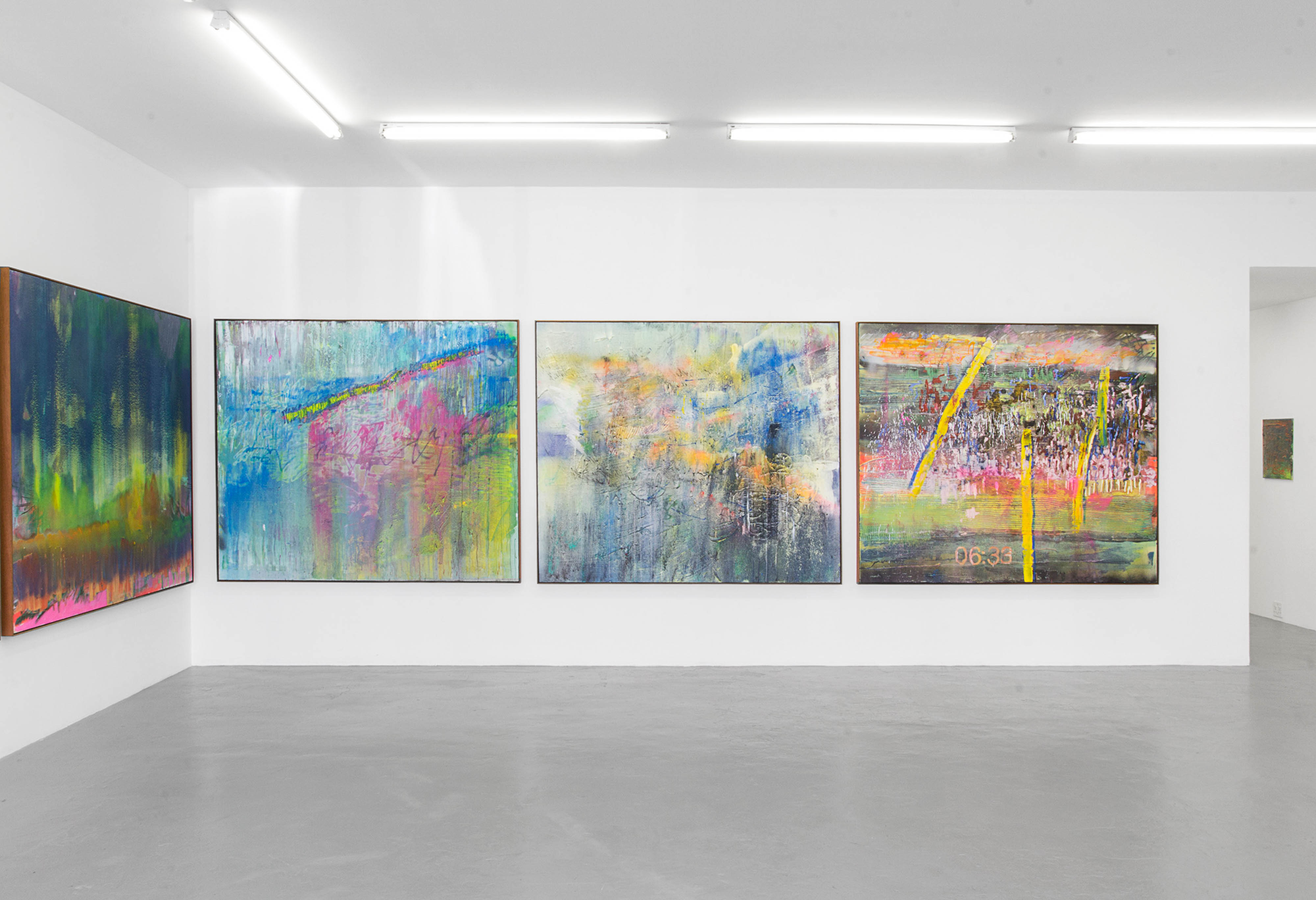

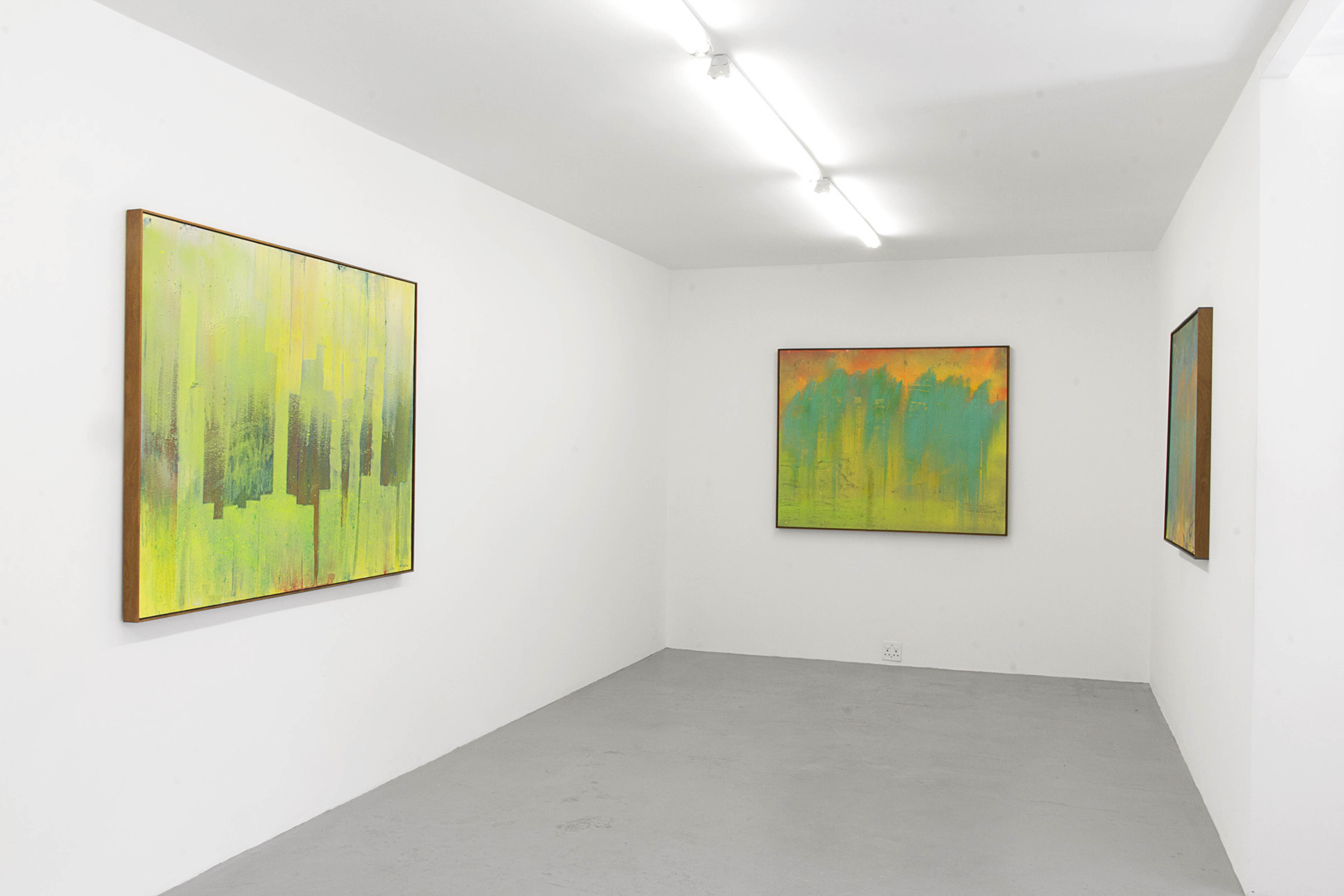
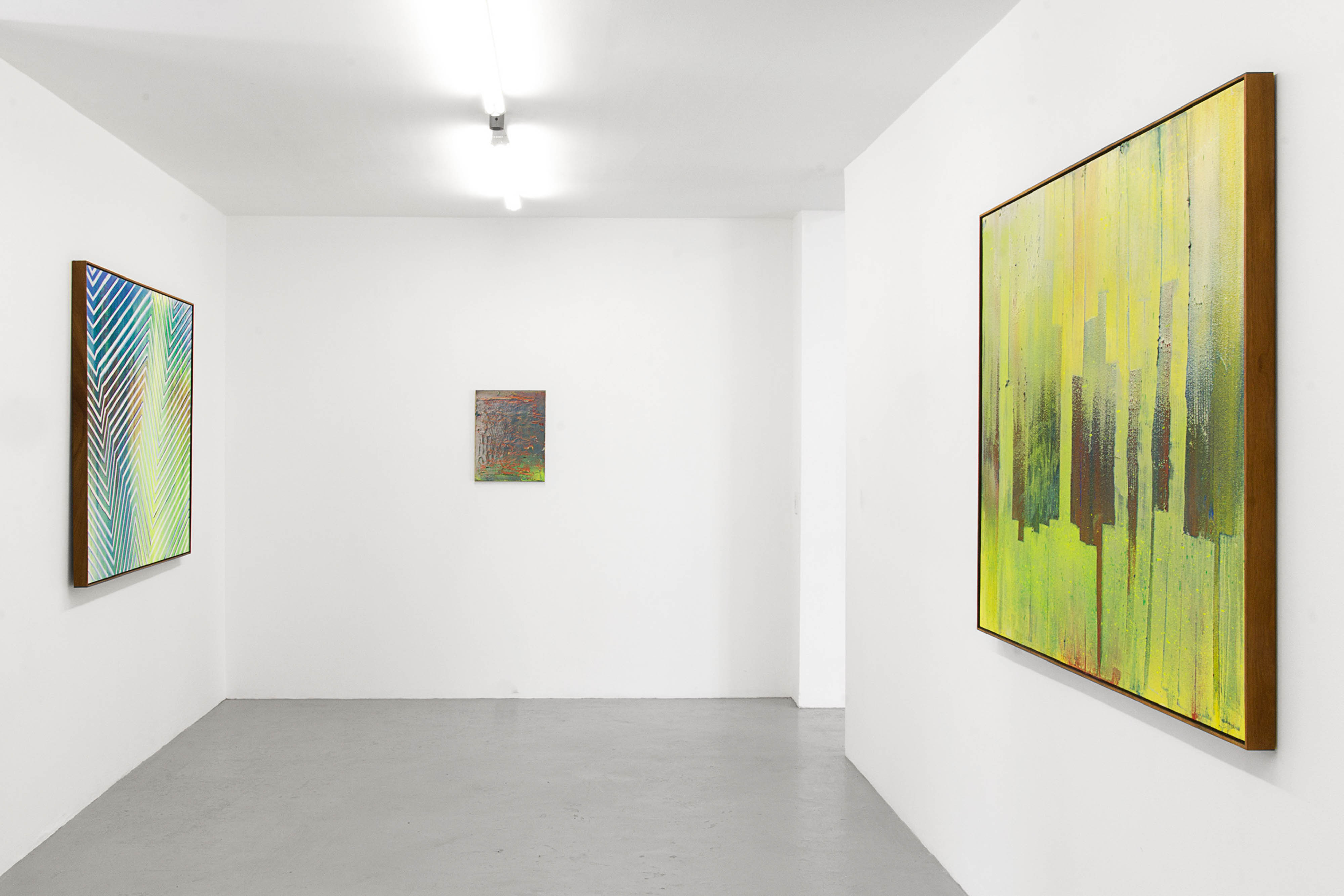
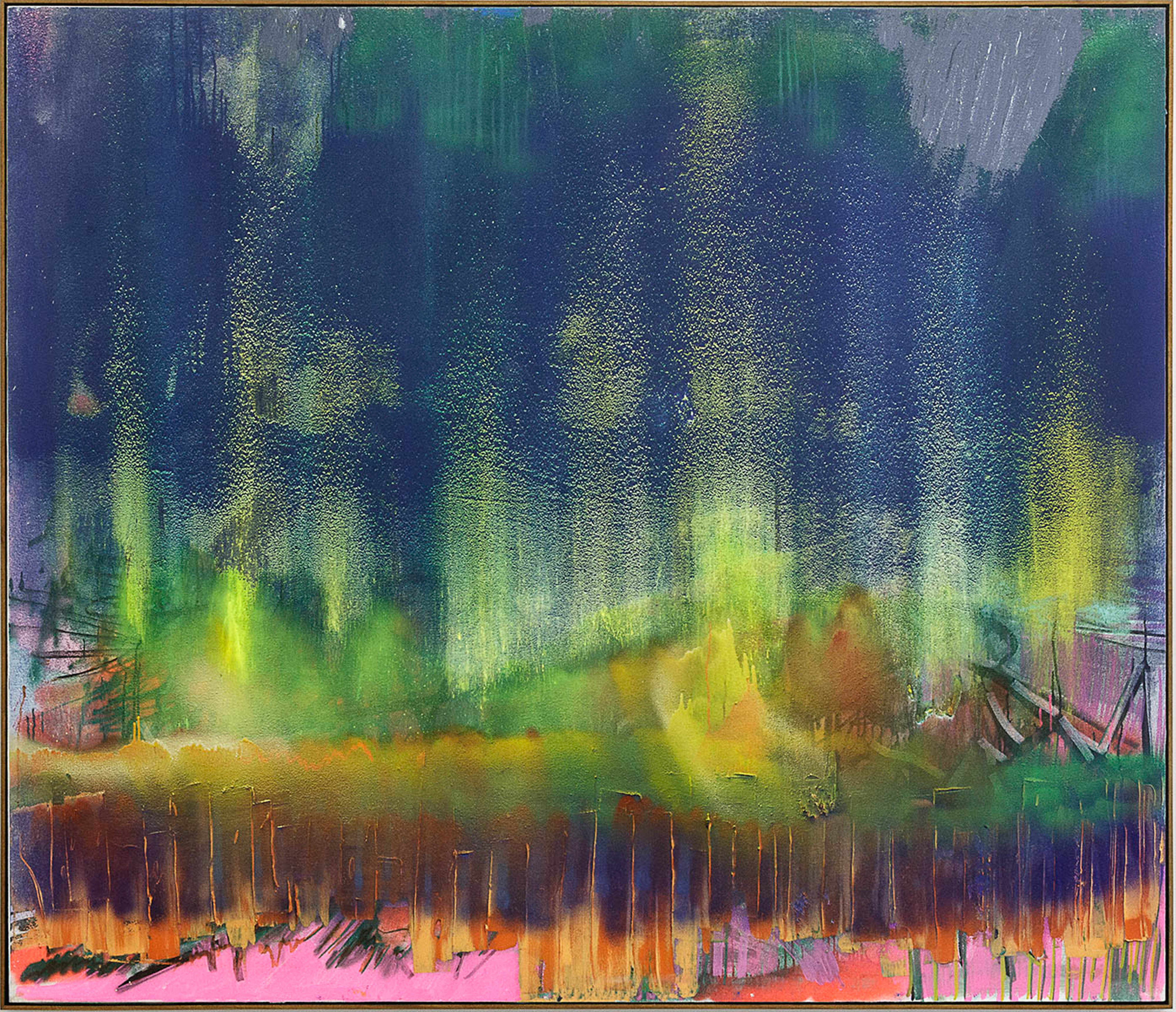





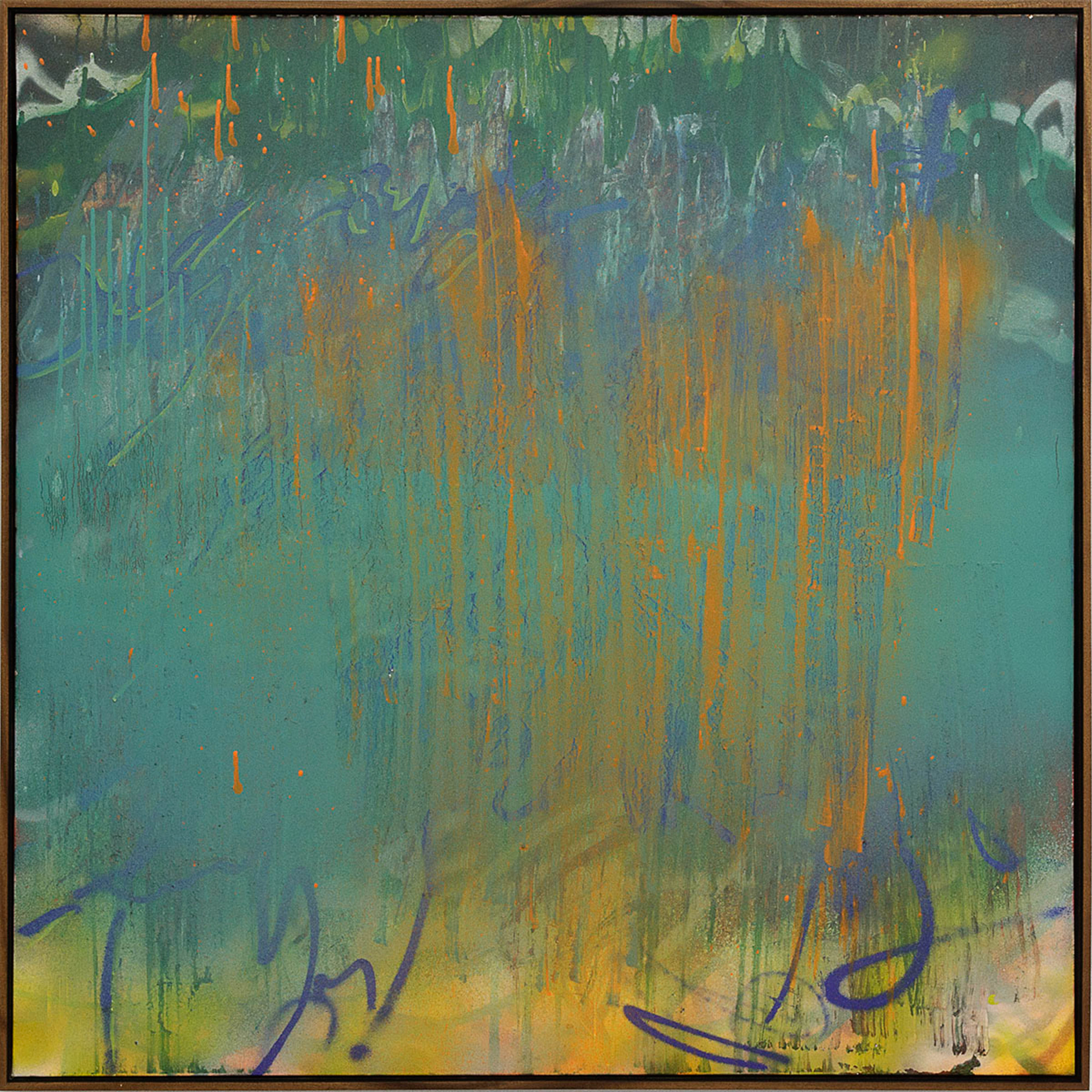
[ctrl+c; ctrl+v]
– a weather condition in which visibility and contrast are severely reduced by snow or sand. The horizon disappears completely and there are no reference points at all, leaving the individual with a distorted orientation.
– sunlight is blocked, reduced and scattered by ice crystals or wind-blown spin drift.
– light is received from multiple directions with each light source producing overlapping shadows which cancel-out each other. This dulls the area and removes indicators such as tones and contrast, making it difficult to discern similarly coloured slope features. The loss of visual indicators of shape and edge detail results in objects and features seeming to blend into each other, producing a flat featureless vista. An effect of visual blending may be a loss of depth of field resulting in disorientation.
[ctrl+c; ctrl+v]
leave my body lose myself
leave this planet and leave this hell
born in the east die in the west
i never rest i never rest
whiteout
backwards backwards lose all time
intellect made us blind
analysis paralysis
analysis paralysis
whiteout
hear dog bark don’t ask me why
be born grow old with grace and die
salmon leap sower reap
as crow flies so heat rise – whiteout
need to fill drink this wine
knock back the juice see the signs
leave my body lose myself
leave this planet leave this hell
whiteout
Jan-Henri Booyens is an artist of extremes, fully inhabiting binaries of rationality and chaos; past and present; abstraction and figuration. The ever-looming presence of a century of abstraction can be felt in all its guises, but imposed upon it is the underground punk aesthetic that characterises his oeuvre. Electrified lines and pixelated sprays of paint grab outwards and acidic pigments form fields of psychedelic colour across large-scale canvases. In his own words, he aspires to make art with the aesthetic and emotional quality of a song, “a melody that gets stuck in your head”¹. Extending his musical metaphor, this series of work is comparable to a winding electric guitar solo, one that soars and screeches, but also dips low into a reverberating hum.
Notable in this new series of work is Booyens’ shift toward Glitch art, a result of his fascination with pixel drifting, data mulching and other forms of automated abstraction. The base line in his paintings is his own work. Photographs as well as earlier paintings are fed into data bending software, and the results form the inspiration for the final paintings. Booyens is entranced by this code reaction, the intensification of pixels bouncing off each other, the machine’s dependency on header code as an instruction to interpret “correctly”. At the same time he realizes that the glitch “had a specific home, it lives inside the code, inside the machine. What if paint could glitch?”
The process of bending data to produce art, creation from destruction, parallels the way Booyens’ paints, creating and then ‘destroying’ layer upon layer on the canvas. In his mind the paint becomes the code, and his task is to corrupt it. In withholding information, he sets out to create a new form of collision, translating the naiveté of broken binary code into a celebration of analogue brokenness.
– a weather condition in which visibility and contrast are severely reduced by snow or sand. The horizon disappears completely and there are no reference points at all, leaving the individual with a distorted orientation.
– sunlight is blocked, reduced and scattered by ice crystals or wind-blown spin drift.
– light is received from multiple directions with each light source producing overlapping shadows which cancel-out each other. This dulls the area and removes indicators such as tones and contrast, making it difficult to discern similarly coloured slope features. The loss of visual indicators of shape and edge detail results in objects and features seeming to blend into each other, producing a flat featureless vista. An effect of visual blending may be a loss of depth of field resulting in disorientation.
[ctrl+c; ctrl+v]
leave my body lose myself
leave this planet and leave this hell
born in the east die in the west
i never rest i never rest
whiteout
backwards backwards lose all time
intellect made us blind
analysis paralysis
analysis paralysis
whiteout
hear dog bark don’t ask me why
be born grow old with grace and die
salmon leap sower reap
as crow flies so heat rise – whiteout
need to fill drink this wine
knock back the juice see the signs
leave my body lose myself
leave this planet leave this hell
whiteout
– Killing Joke, 1994
Jan-Henri Booyens is an artist of extremes, fully inhabiting binaries of rationality and chaos; past and present; abstraction and figuration. The ever-looming presence of a century of abstraction can be felt in all its guises, but imposed upon it is the underground punk aesthetic that characterises his oeuvre. Electrified lines and pixelated sprays of paint grab outwards and acidic pigments form fields of psychedelic colour across large-scale canvases. In his own words, he aspires to make art with the aesthetic and emotional quality of a song, “a melody that gets stuck in your head”¹. Extending his musical metaphor, this series of work is comparable to a winding electric guitar solo, one that soars and screeches, but also dips low into a reverberating hum.
Notable in this new series of work is Booyens’ shift toward Glitch art, a result of his fascination with pixel drifting, data mulching and other forms of automated abstraction. The base line in his paintings is his own work. Photographs as well as earlier paintings are fed into data bending software, and the results form the inspiration for the final paintings. Booyens is entranced by this code reaction, the intensification of pixels bouncing off each other, the machine’s dependency on header code as an instruction to interpret “correctly”. At the same time he realizes that the glitch “had a specific home, it lives inside the code, inside the machine. What if paint could glitch?”
The process of bending data to produce art, creation from destruction, parallels the way Booyens’ paints, creating and then ‘destroying’ layer upon layer on the canvas. In his mind the paint becomes the code, and his task is to corrupt it. In withholding information, he sets out to create a new form of collision, translating the naiveté of broken binary code into a celebration of analogue brokenness.
¹ Rick De La Ray (2015). ‘My War – Jan-Henri Booyens’, The Lake Magazine.




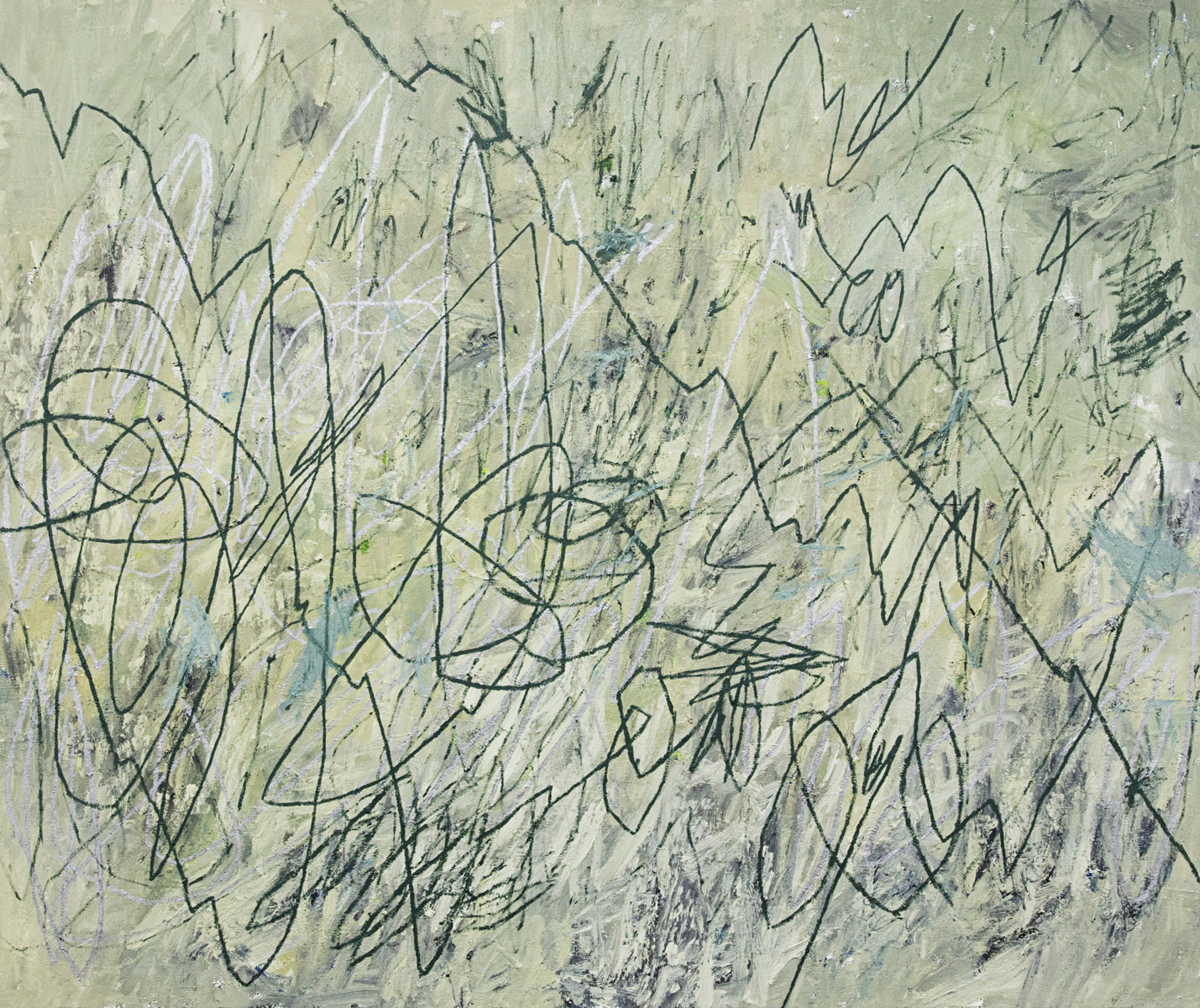

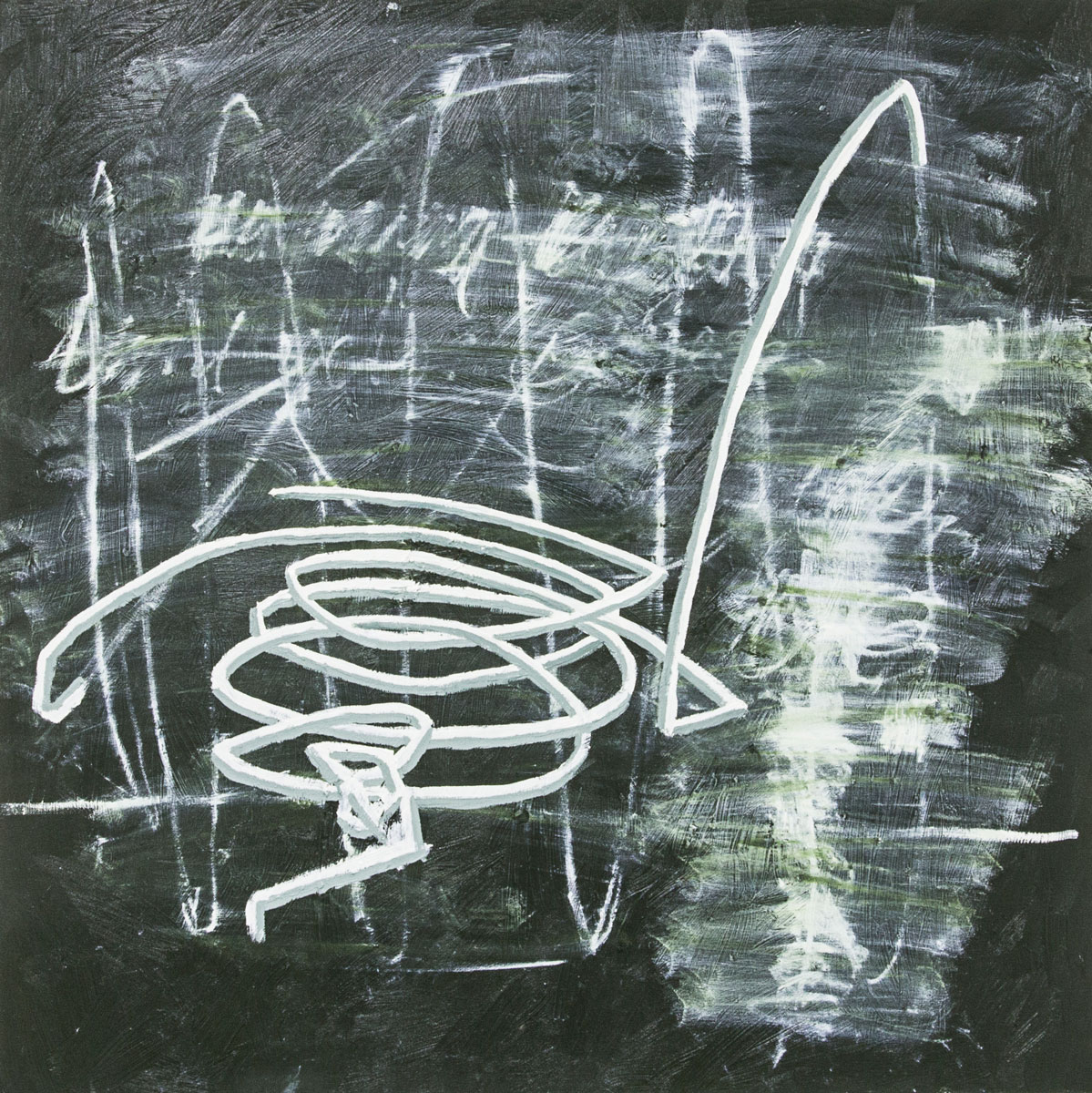


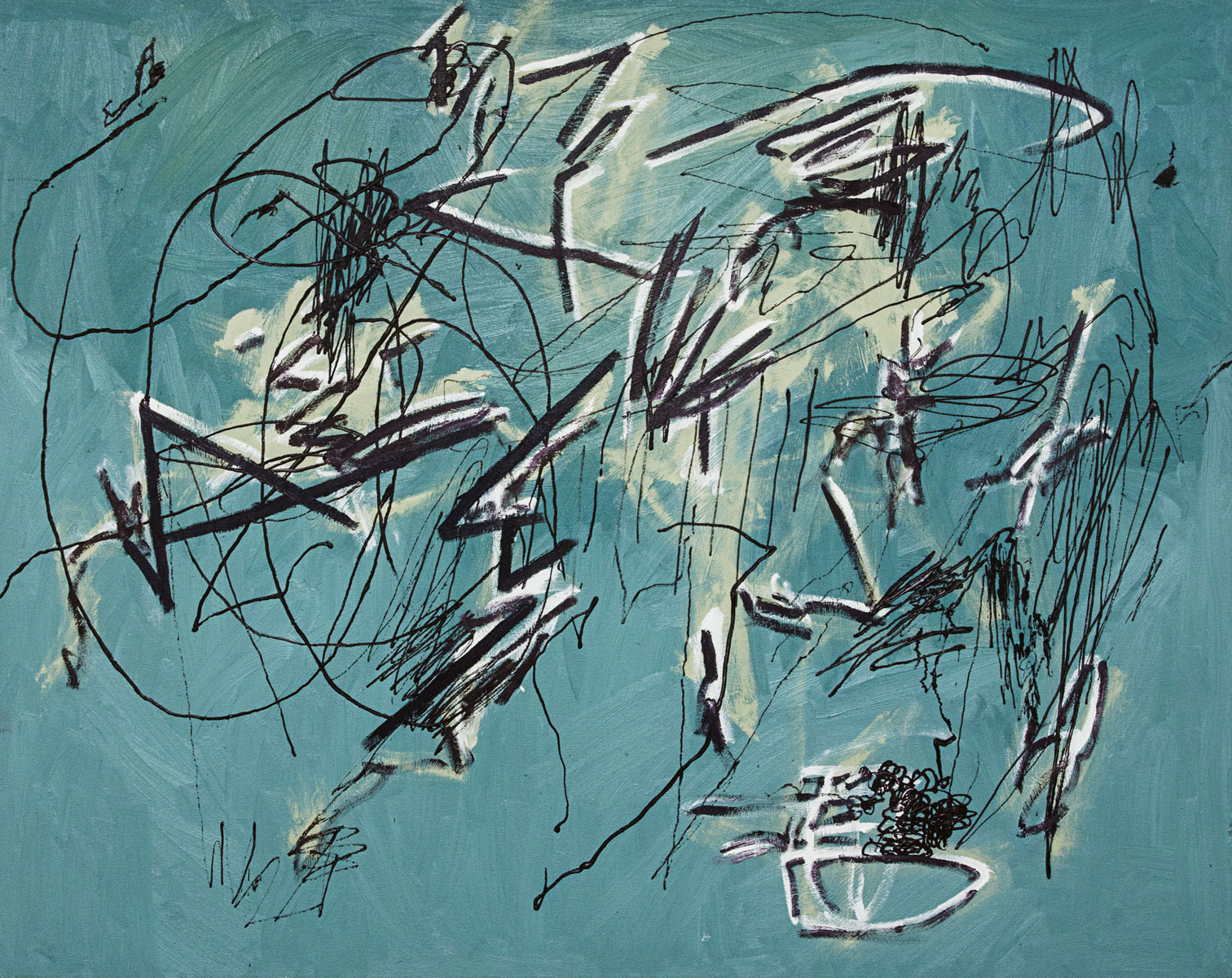
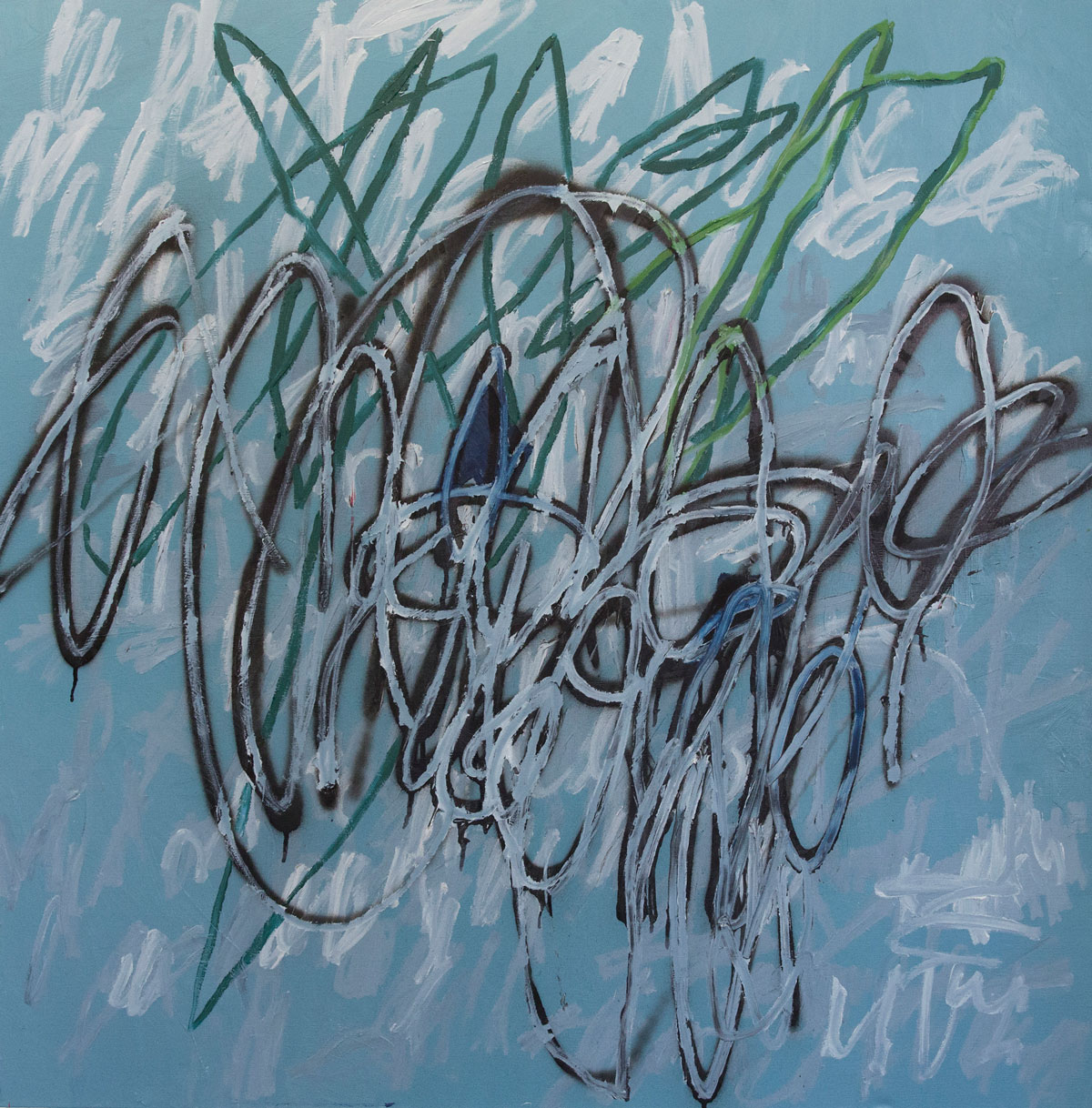
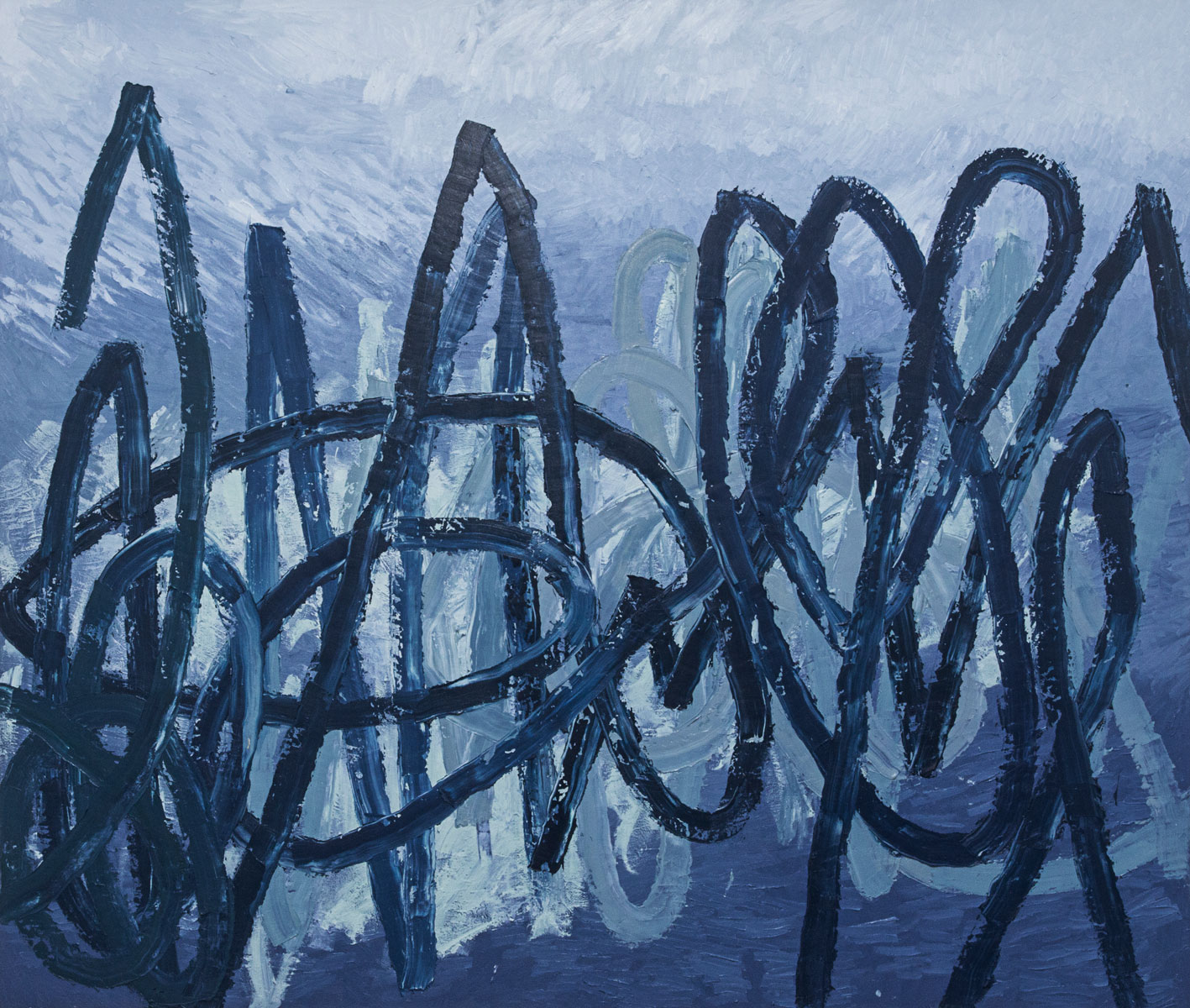





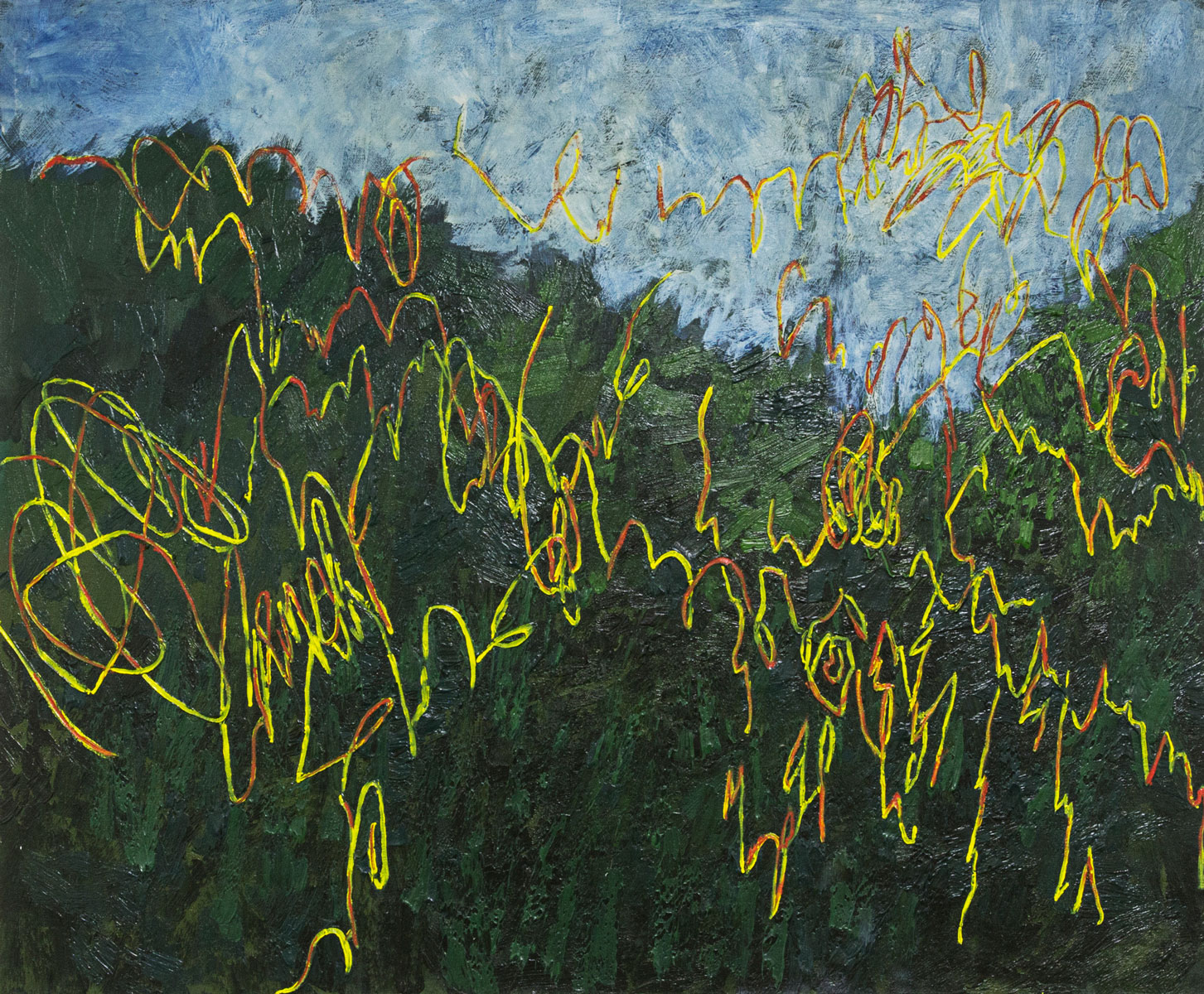

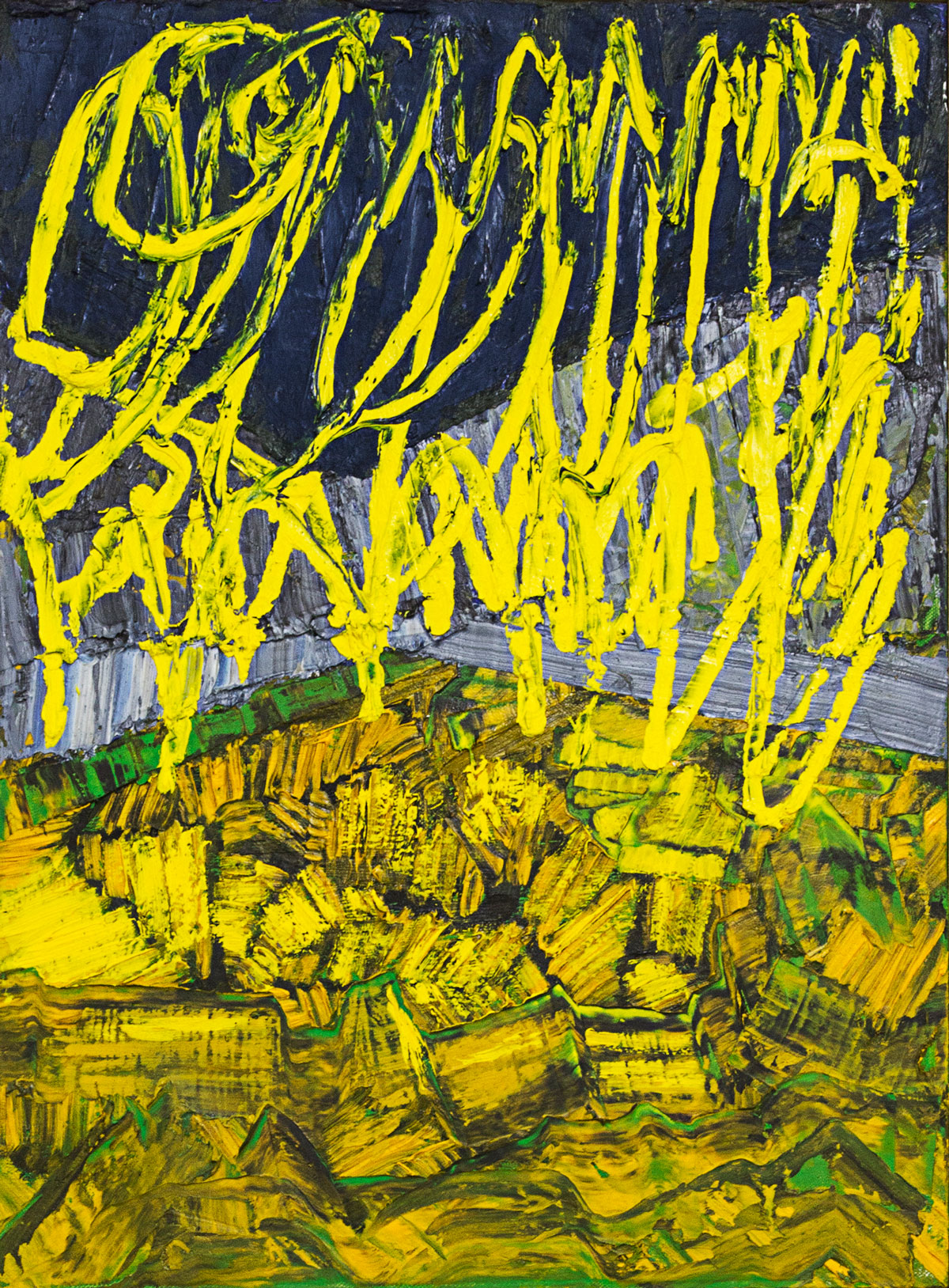

blank projects is pleased to present Some Kind of Nature, a solo exhibition of new work by Jan-Henri Booyens. These paintings are the realisation of a process of
automatic drawing performed by Booyens during a recent five month retreat.
Similar to the Dadaist technique of automatism which relied on the improvised free-flow of thoughts and expressions, Booyens would carry on drawing as he slipped into sleep, only to discover the results of the process the following day. In describing his reasoning for this method, Booyens says that he came about it in order to try and break away from the premeditated conditioning of his compositions. Easily dismissed as insignificant marks and doodles, these drawings have however been brought to life as they are boldly reinterpreted as large-scale oil paintings, demonstrating Booyens’ inimitable approach to his medium. Energetic and occasionally violent, the works reveal a physical confrontation with the canvas as Booyens ventures into a wilderness of abstract exploration.
Booyens’ pictorial vocabulary is complex; throwing together aspects of abstract expressionism and three-chord punk rock, it juxtaposes pared-down, frenetic linear work with backgrounds of densely textured planes of soft monochromes, dominated by melancholic blues. These paintings reveal a search for a new language of painterly abstraction that is uncompromising in its urgency. Through the chaos of these compositions there comes a considered meditation on the productivity of his automatic method that brings a visual order to what might be otherwise seen as random. The works on Some Kind of Nature is simultaneously fearless and defiant, and vulnerable.
Jan-Henri Booyens’ work is often described in terms of a struggle between the representational and abstract, the rational and chaotic. An affinity and critical engagement with Modernism is coupled with his relationship to the South African landscape, both physical and social. He has been described as a “forerunner of a new kind of formalism” in South African art”*.
Recently, Booyens has affected a subtle shift in his work from concerns with graphic pattern and repetition to experiments in texture and line. His most recent paintings signal a swivel in the artist’s gaze, from the external to the internal, with the artist destroying and resurrecting his paintings, mixing his media and introducing new source material.
*Mary Corrigall, 2012, ‘Pulling Things Apart: Jan-Henri Booyens’.
Born in Johannesburg in 1980, Booyens lives and works between Cape Town and Pretoria. He studied at the Durban Institute of Technology and the Gerrit Rietveld Academie voor Beeldende Kunsten in Amsterdam, and has taught in the Visual Arts Department at the University of Stellenboosch. Booyens was one-third of the infamous artist collective Avant Car Guard and his work is part of numerous collections, including the Cartier Foundation for Contemporary Art in Paris and the Iziko South African National Gallery. Solo exhibitions to date are The Matt Sparkle (Whatiftheworld, Cape Town, 2008), People Used To Dream About The Future (artSPACE Berlin, 2009), Tectonic (Whatiftheworld, Cape Town, 2010), Strange Days (blank projects, 2012) and Save It Till The Morning After (blank projects, 2013)
Similar to the Dadaist technique of automatism which relied on the improvised free-flow of thoughts and expressions, Booyens would carry on drawing as he slipped into sleep, only to discover the results of the process the following day. In describing his reasoning for this method, Booyens says that he came about it in order to try and break away from the premeditated conditioning of his compositions. Easily dismissed as insignificant marks and doodles, these drawings have however been brought to life as they are boldly reinterpreted as large-scale oil paintings, demonstrating Booyens’ inimitable approach to his medium. Energetic and occasionally violent, the works reveal a physical confrontation with the canvas as Booyens ventures into a wilderness of abstract exploration.
Booyens’ pictorial vocabulary is complex; throwing together aspects of abstract expressionism and three-chord punk rock, it juxtaposes pared-down, frenetic linear work with backgrounds of densely textured planes of soft monochromes, dominated by melancholic blues. These paintings reveal a search for a new language of painterly abstraction that is uncompromising in its urgency. Through the chaos of these compositions there comes a considered meditation on the productivity of his automatic method that brings a visual order to what might be otherwise seen as random. The works on Some Kind of Nature is simultaneously fearless and defiant, and vulnerable.
Jan-Henri Booyens’ work is often described in terms of a struggle between the representational and abstract, the rational and chaotic. An affinity and critical engagement with Modernism is coupled with his relationship to the South African landscape, both physical and social. He has been described as a “forerunner of a new kind of formalism” in South African art”*.
Recently, Booyens has affected a subtle shift in his work from concerns with graphic pattern and repetition to experiments in texture and line. His most recent paintings signal a swivel in the artist’s gaze, from the external to the internal, with the artist destroying and resurrecting his paintings, mixing his media and introducing new source material.
*Mary Corrigall, 2012, ‘Pulling Things Apart: Jan-Henri Booyens’.
Born in Johannesburg in 1980, Booyens lives and works between Cape Town and Pretoria. He studied at the Durban Institute of Technology and the Gerrit Rietveld Academie voor Beeldende Kunsten in Amsterdam, and has taught in the Visual Arts Department at the University of Stellenboosch. Booyens was one-third of the infamous artist collective Avant Car Guard and his work is part of numerous collections, including the Cartier Foundation for Contemporary Art in Paris and the Iziko South African National Gallery. Solo exhibitions to date are The Matt Sparkle (Whatiftheworld, Cape Town, 2008), People Used To Dream About The Future (artSPACE Berlin, 2009), Tectonic (Whatiftheworld, Cape Town, 2010), Strange Days (blank projects, 2012) and Save It Till The Morning After (blank projects, 2013)

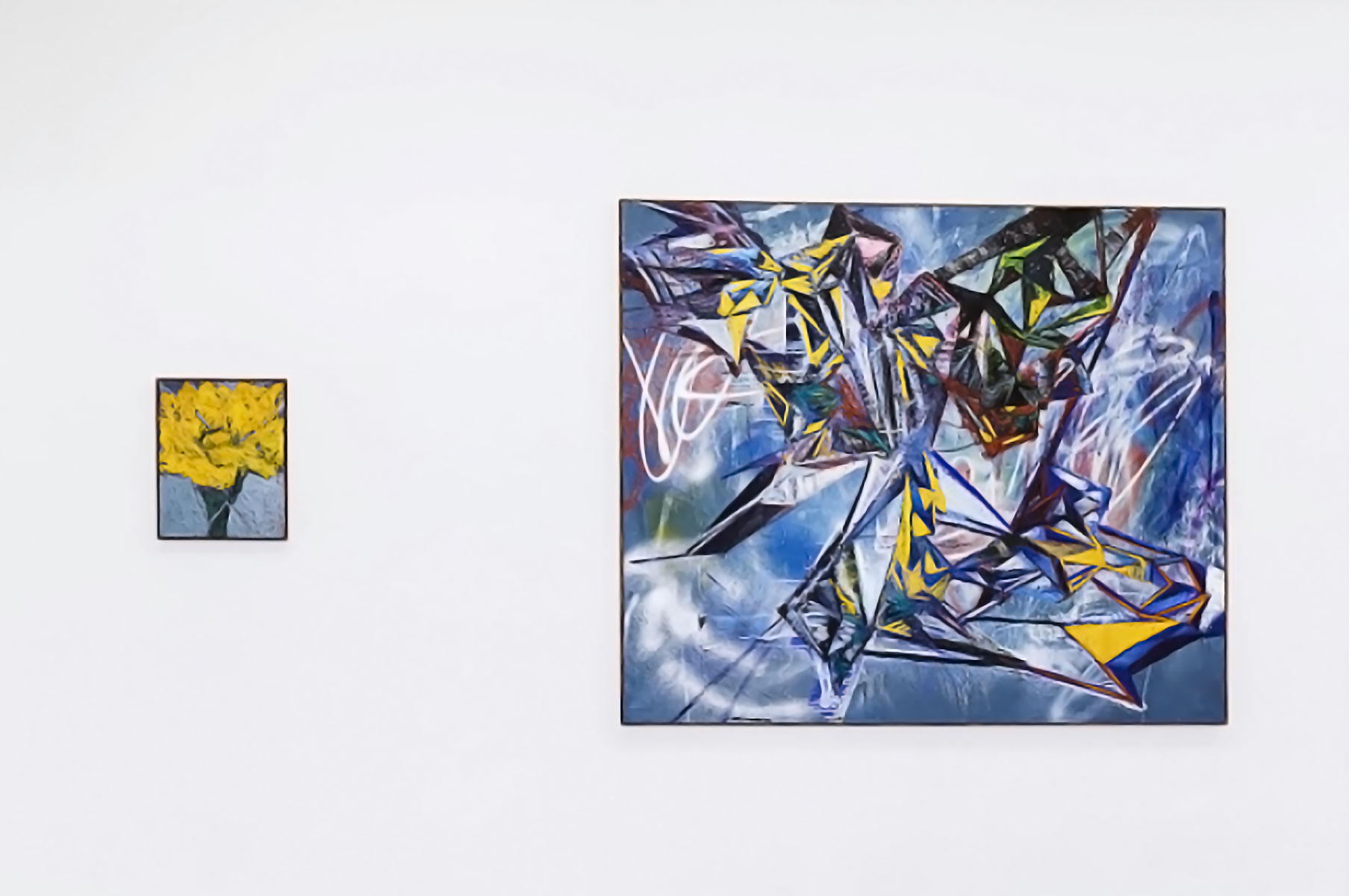

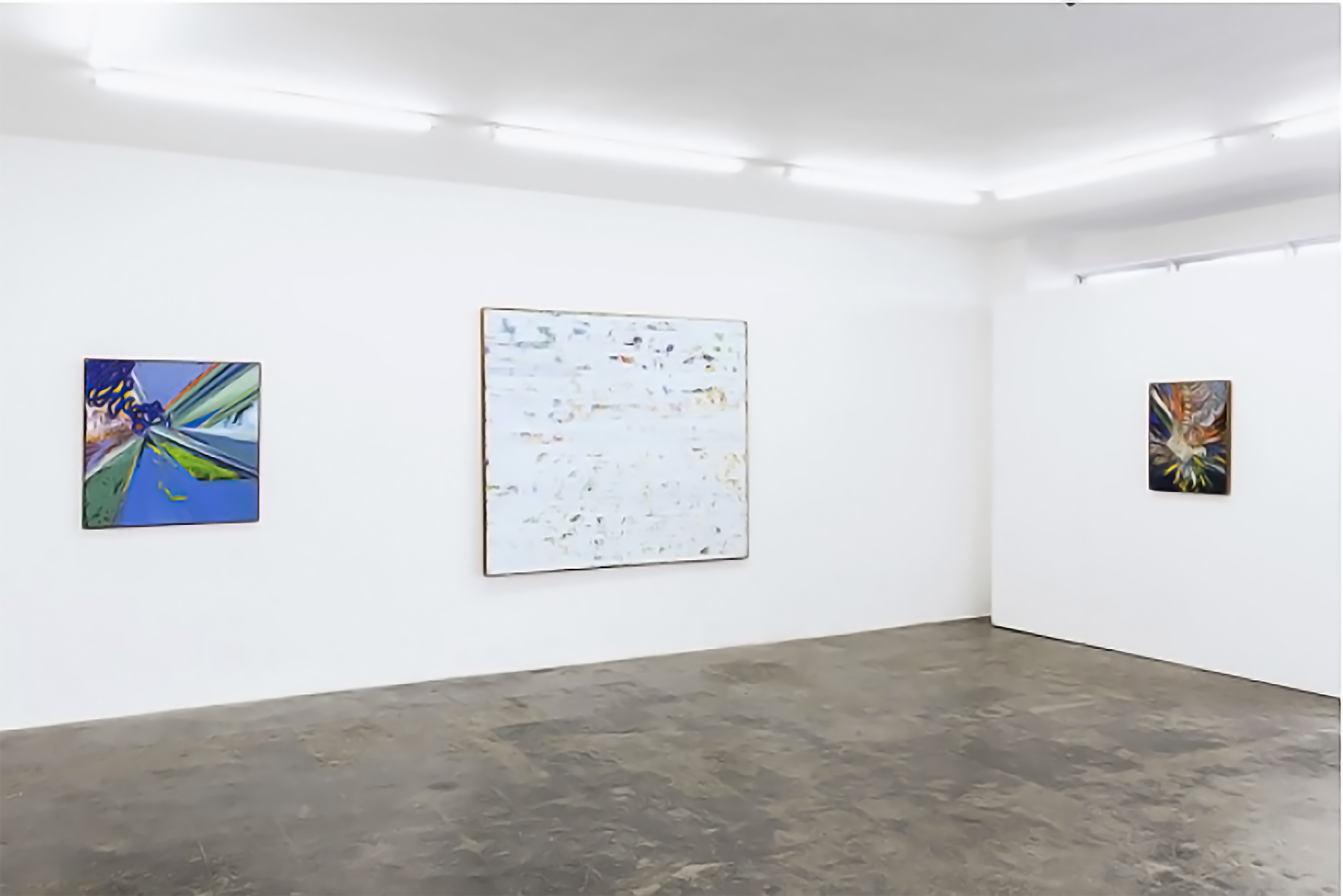

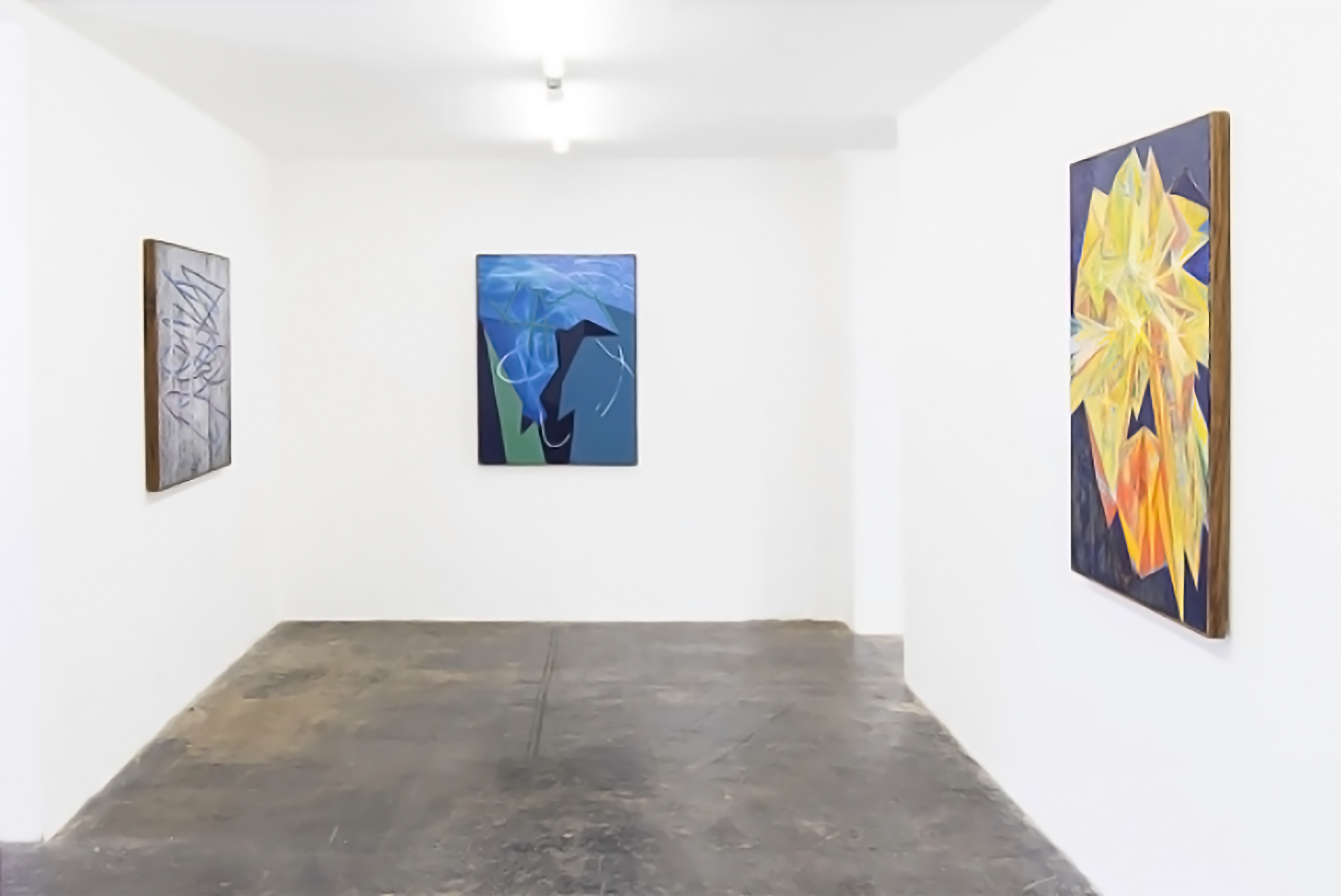

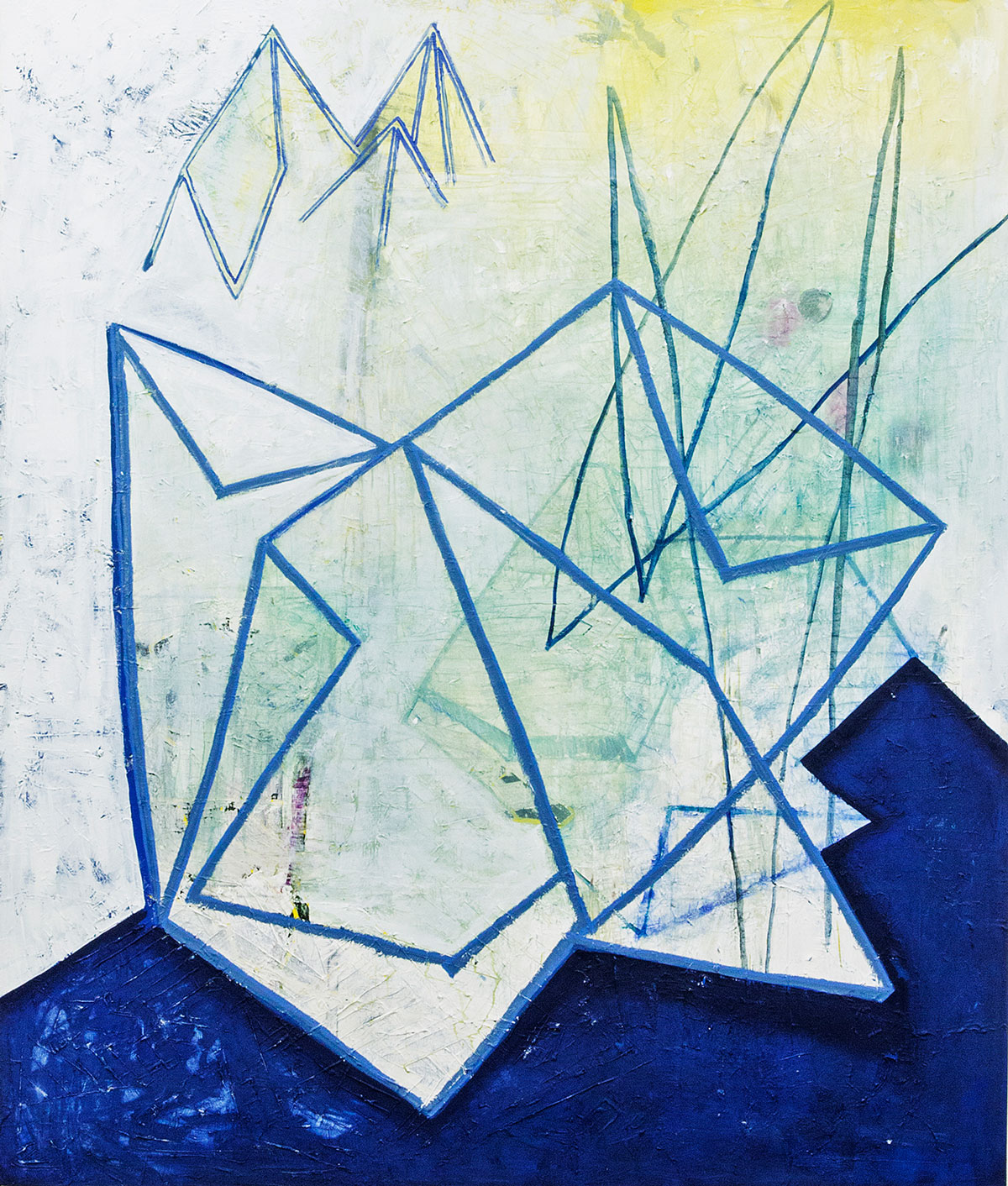




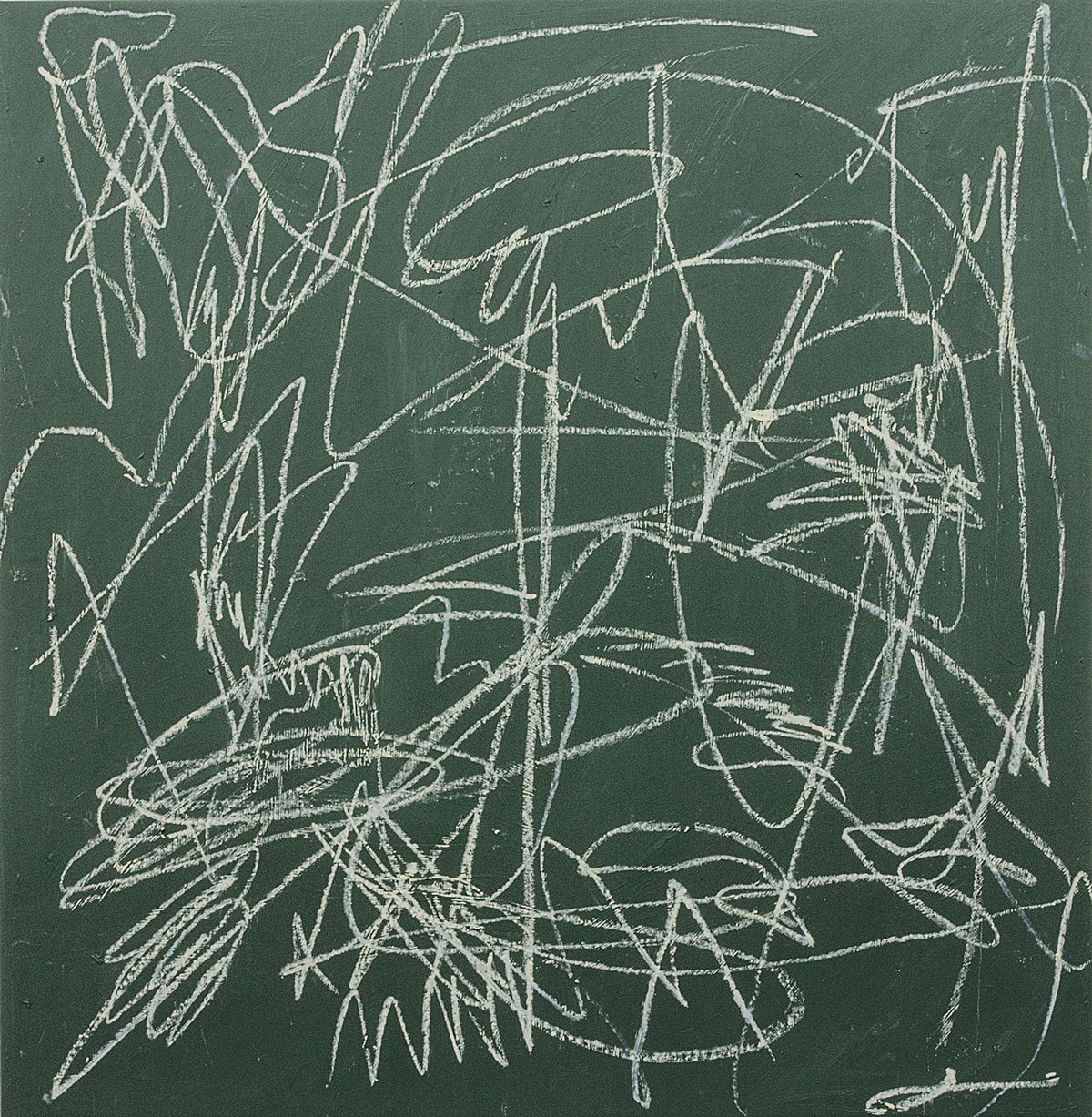
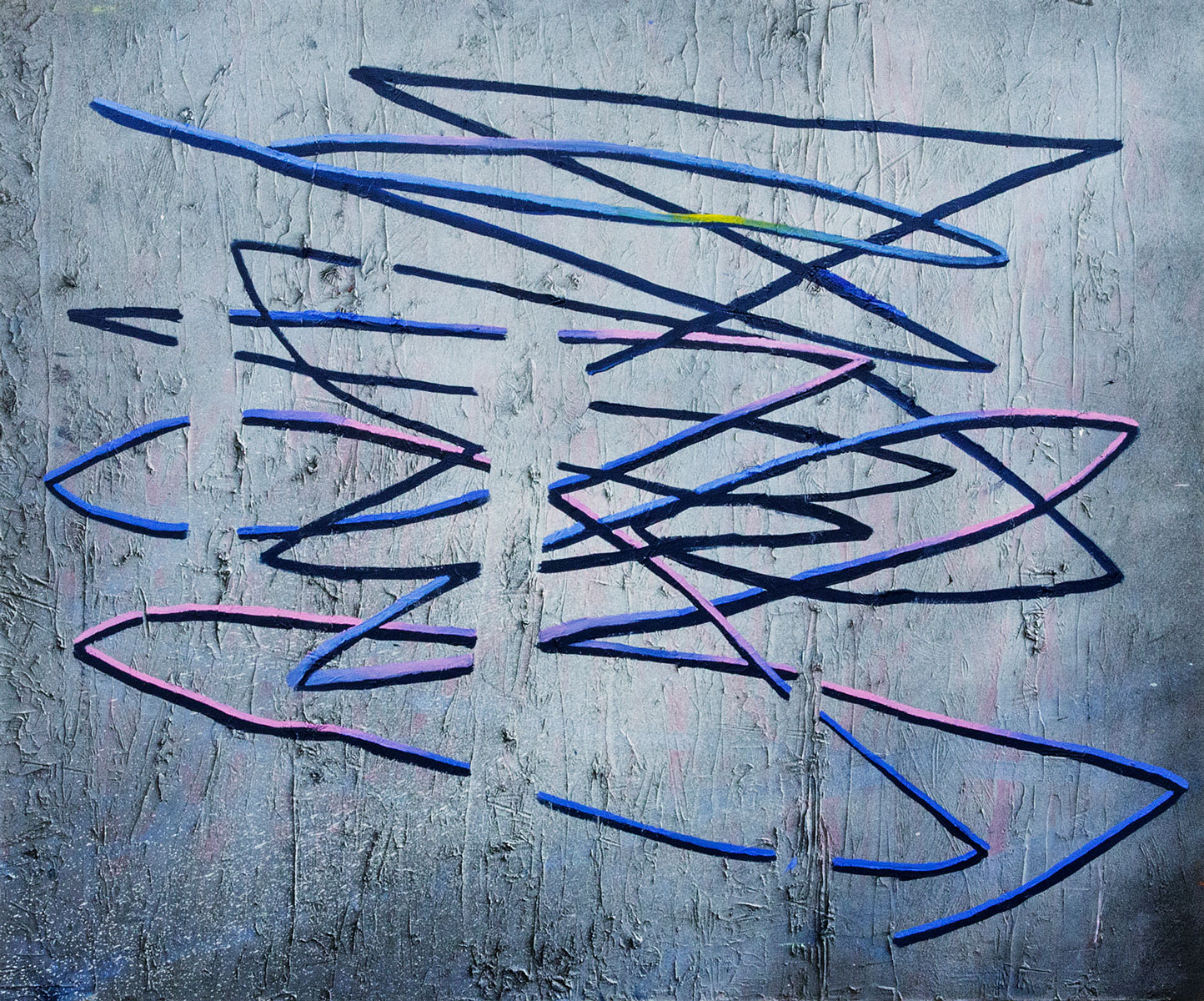






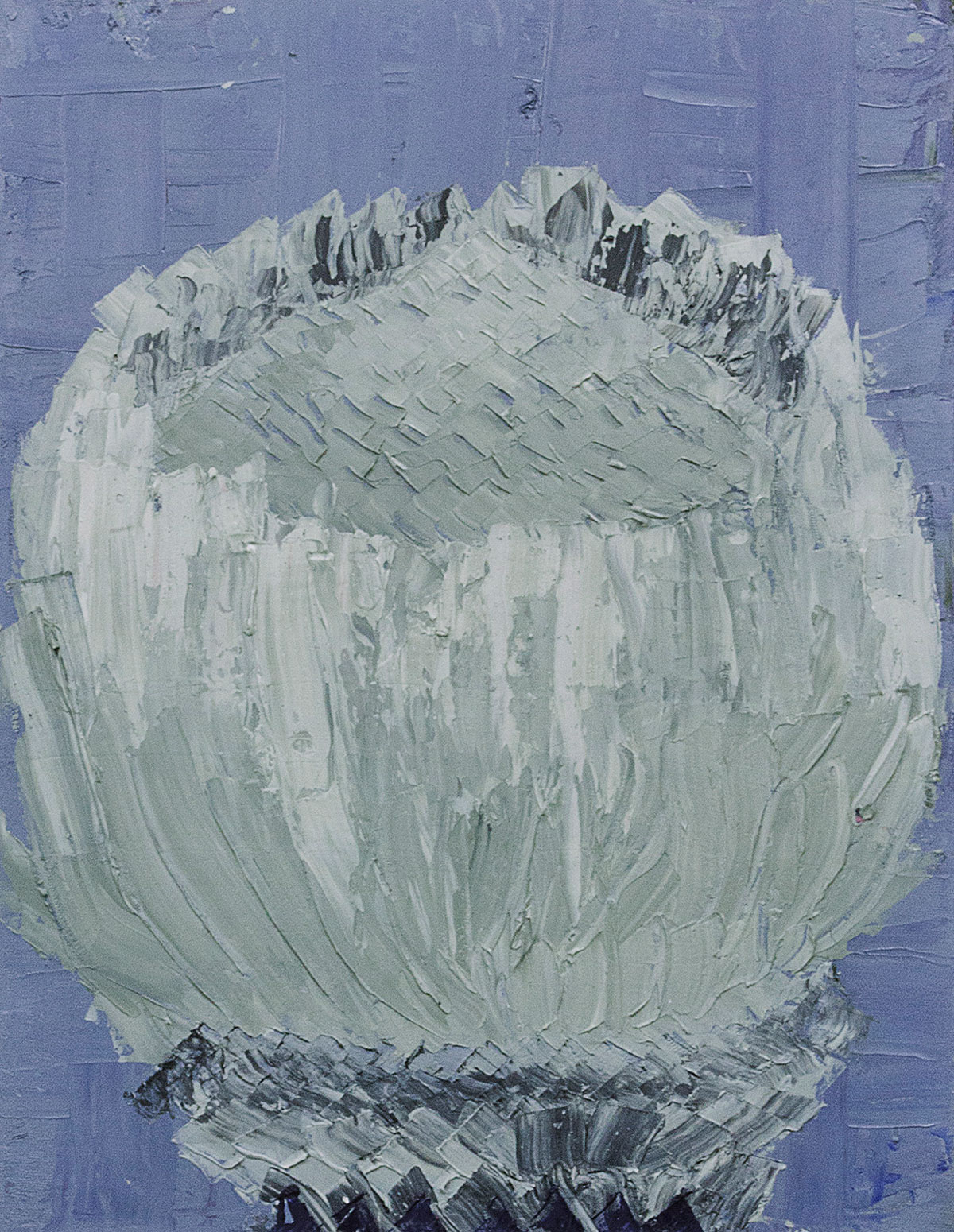
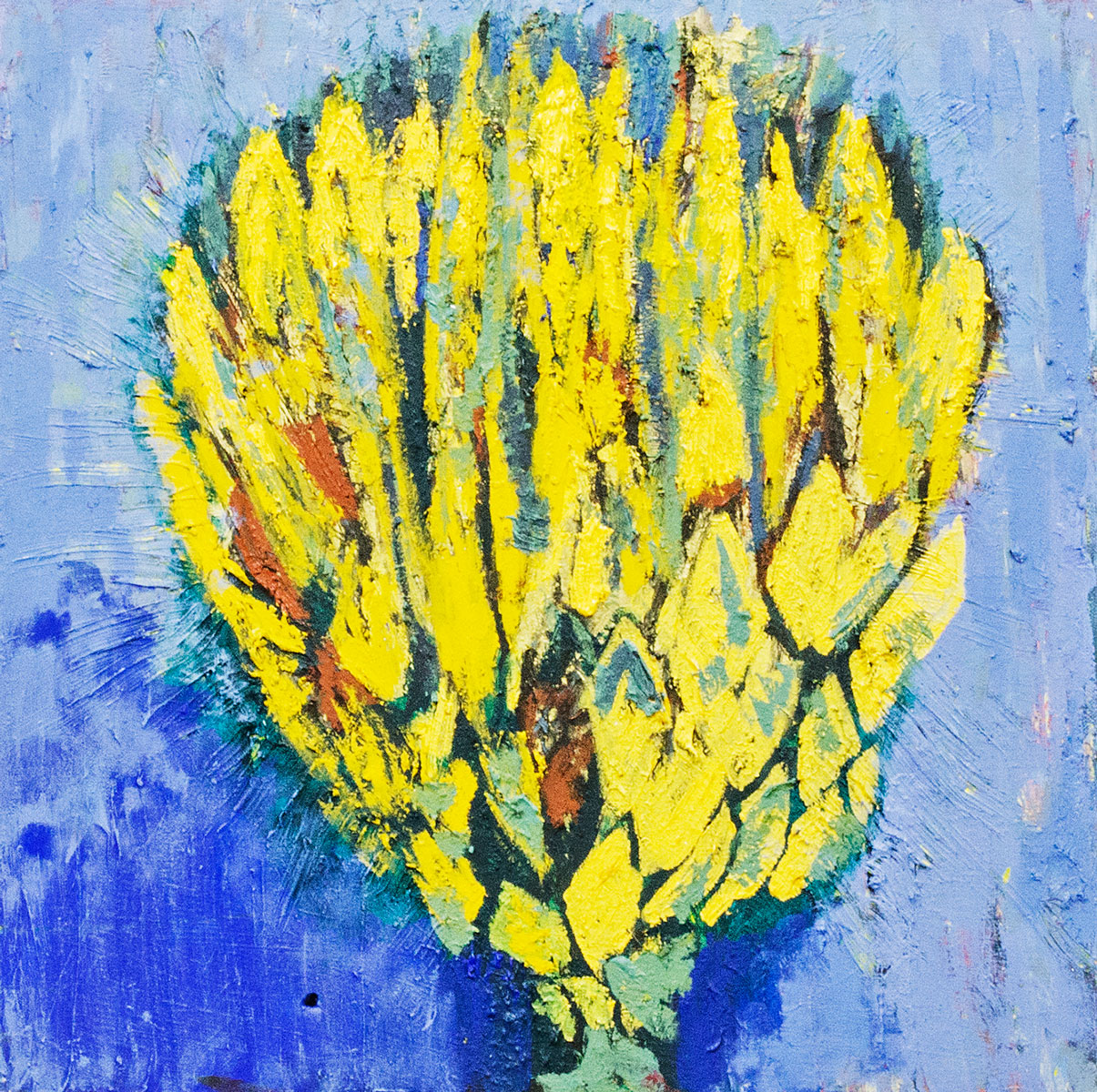


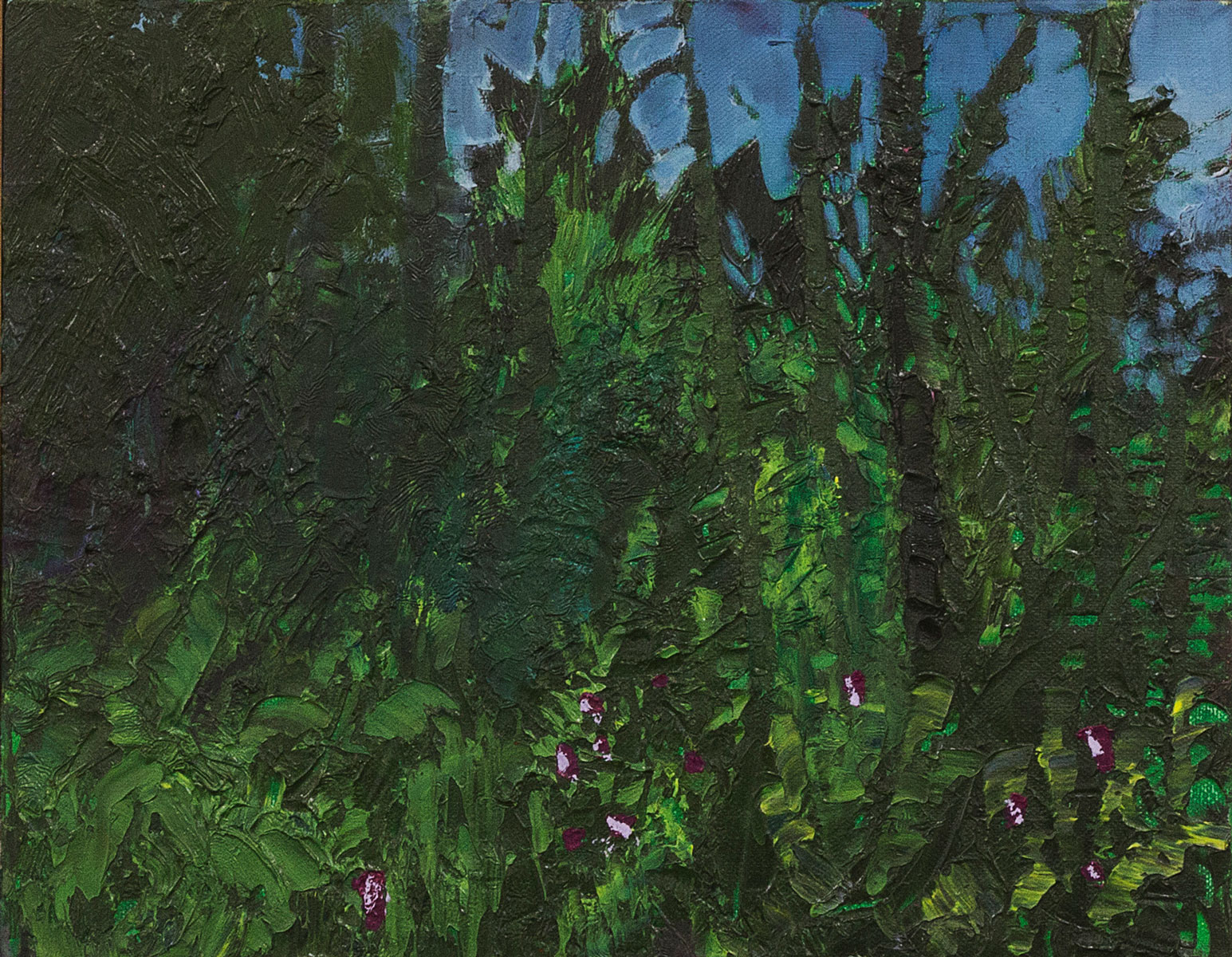

Booyens’ work is often described in terms of a struggle between the representational and abstract, the rational and chaotic. An affinity and critical engagement with Modernism is coupled with his relationship to the South African landscape, both social and physical.
For his latest work, Booyens has affected subtle iconographic shift from forms that allude of the art historical ‘landscape’ to those of the ‘still life’. Booyens’s flower like-forms explode in abstract compositions and assemblages of studio detritus, where form and colour fracture and falter in 70’impasto kitch, Stella stripes, colour supernovas and jpeg disintegration.
Booyens has been described as “a forerunner of a new kind of formalism in local art”. Born in Johannesburg in 1980, he lives and works between Cape Town and Pretoria. He studied at the Durban Institute of Technology and the Gerrit Rietveld Academie voor Beeldende Kunsten in Amsterdam, and currently teaches in the Visual Arts Department at the University of Stellenbosch. Booyens is also one-third of the infamous artist collective Avant Car Guard. His work is part of numerous collections, including the Cartier Foundation for Contemporary Art in Paris. Solo exhibitions include ‘The Matt Sparkle’ (Whatiftheworld, Cape Town 2008), ‘People Used To Dream About The Future’ (artSPACE Berlin 2009) and ‘Tectonic’ (Whatiftheworld, Cape Town 2010). His previous show at blank, ‘Strange Days’, was held in April 2012.
For his latest work, Booyens has affected subtle iconographic shift from forms that allude of the art historical ‘landscape’ to those of the ‘still life’. Booyens’s flower like-forms explode in abstract compositions and assemblages of studio detritus, where form and colour fracture and falter in 70’impasto kitch, Stella stripes, colour supernovas and jpeg disintegration.
Booyens has been described as “a forerunner of a new kind of formalism in local art”. Born in Johannesburg in 1980, he lives and works between Cape Town and Pretoria. He studied at the Durban Institute of Technology and the Gerrit Rietveld Academie voor Beeldende Kunsten in Amsterdam, and currently teaches in the Visual Arts Department at the University of Stellenbosch. Booyens is also one-third of the infamous artist collective Avant Car Guard. His work is part of numerous collections, including the Cartier Foundation for Contemporary Art in Paris. Solo exhibitions include ‘The Matt Sparkle’ (Whatiftheworld, Cape Town 2008), ‘People Used To Dream About The Future’ (artSPACE Berlin 2009) and ‘Tectonic’ (Whatiftheworld, Cape Town 2010). His previous show at blank, ‘Strange Days’, was held in April 2012.
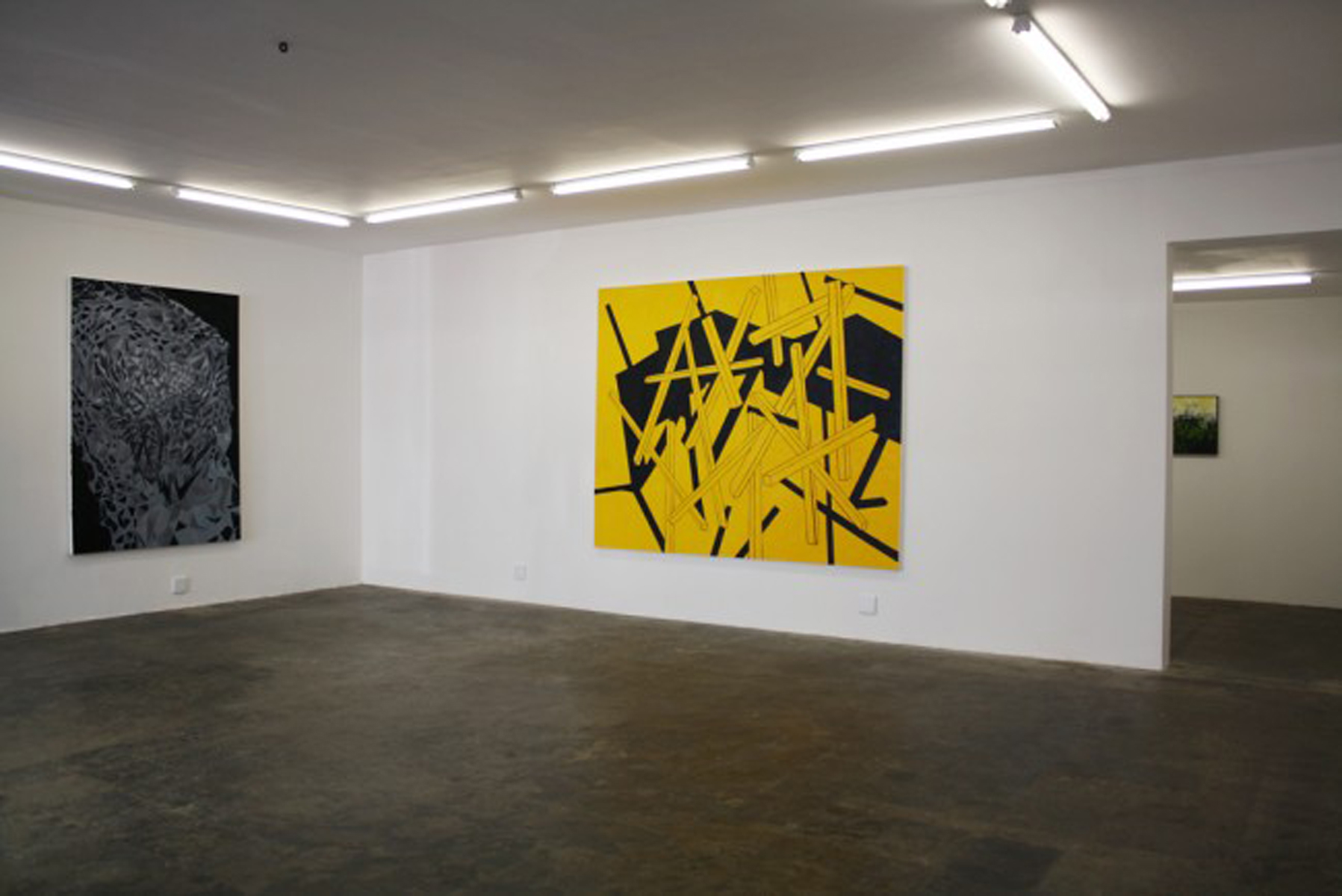






We linger alone
Bodies confused
Memories misused
As we run from the day
To a strange night of stone
-Jim Morrison 1967
blank projects is proud to host the fourth solo
exhibition of critically acclaimed painter Jan-Henri
Booyens. STRANGE DAYS is a body of work created in
2012 in Pretoria that expands the abstract/landscape
iconographic structures Booyens developed in his
previous bodies of work, TECTONIC (2010) and THE
MATT SPARKLE(2008).
In STRANGE DAYS these structures evolve into isolated
forms that vary from the severely monochrome to the
exuberantly polychrome. His abstracted compositions
evoke landscapes built on systems of fractal
geometry, and yet they retain the spontaneity of an
intuitive creation process. Booyens’ reluctance to
completely undermine figurative representation adds
to this body of work’s feeling of internal dissent, a
conflict between the order of recognizable forms and
the vitality of chaos.
Bodies confused
Memories misused
As we run from the day
To a strange night of stone
-Jim Morrison 1967
blank projects is proud to host the fourth solo
exhibition of critically acclaimed painter Jan-Henri
Booyens. STRANGE DAYS is a body of work created in
2012 in Pretoria that expands the abstract/landscape
iconographic structures Booyens developed in his
previous bodies of work, TECTONIC (2010) and THE
MATT SPARKLE(2008).
In STRANGE DAYS these structures evolve into isolated
forms that vary from the severely monochrome to the
exuberantly polychrome. His abstracted compositions
evoke landscapes built on systems of fractal
geometry, and yet they retain the spontaneity of an
intuitive creation process. Booyens’ reluctance to
completely undermine figurative representation adds
to this body of work’s feeling of internal dissent, a
conflict between the order of recognizable forms and
the vitality of chaos.